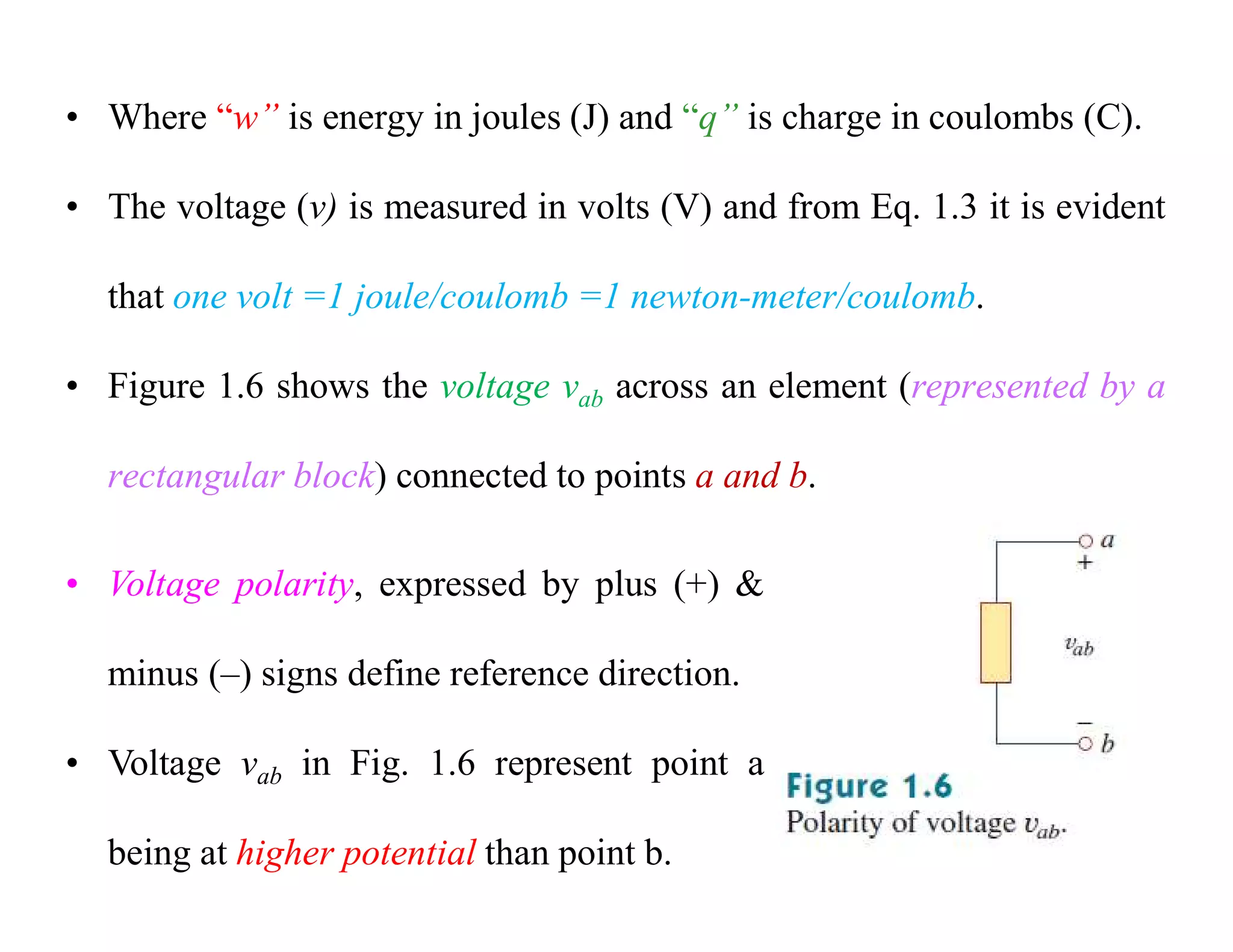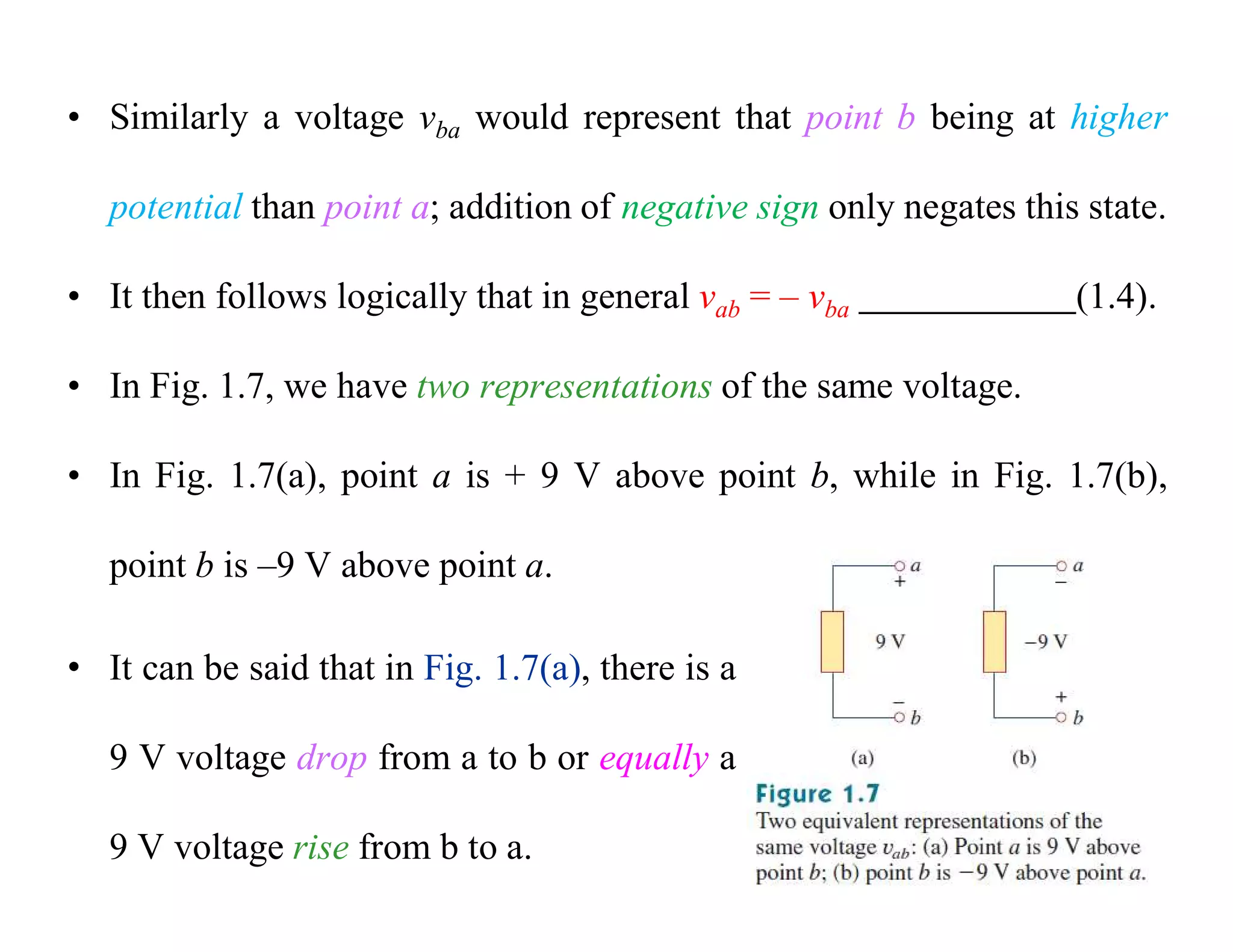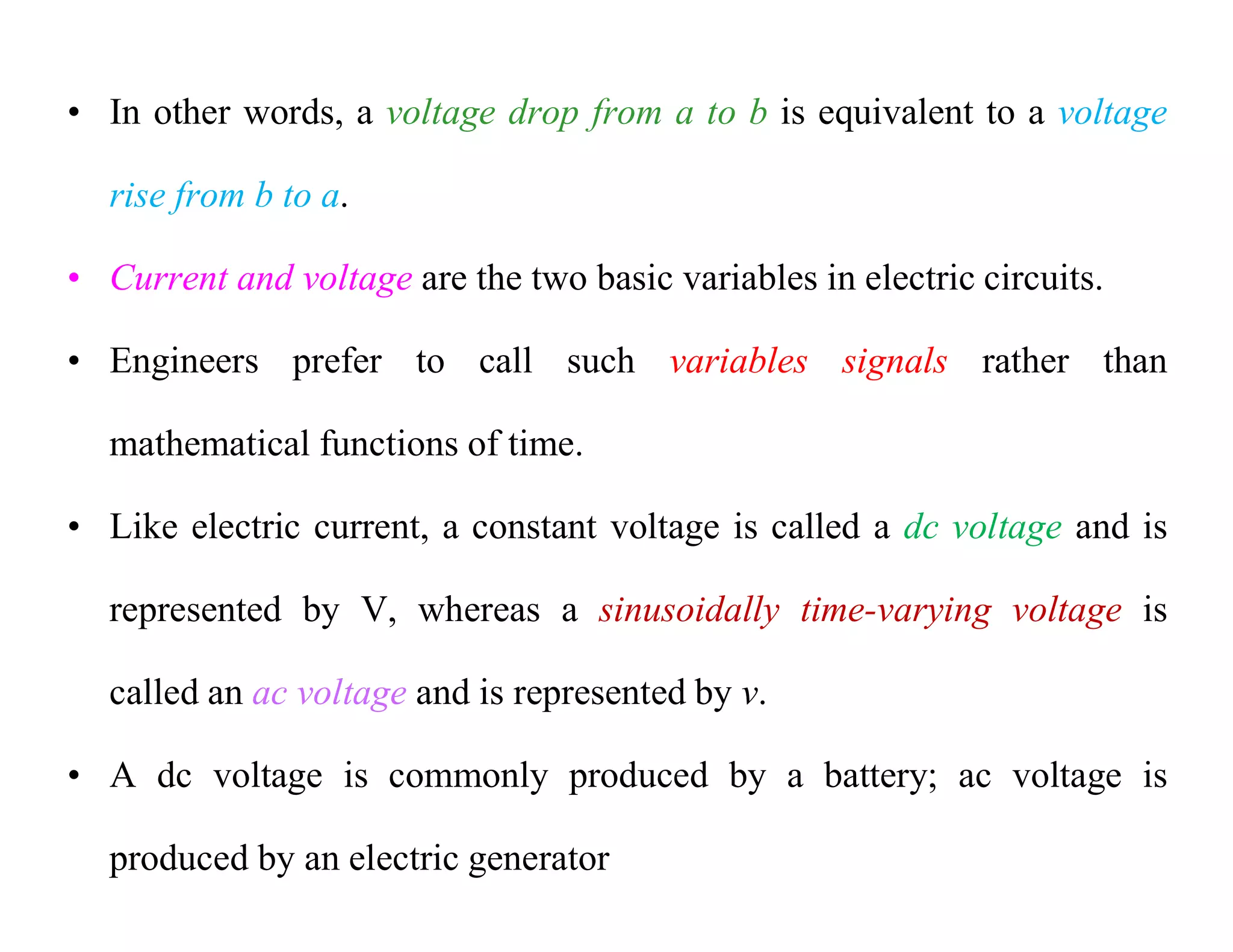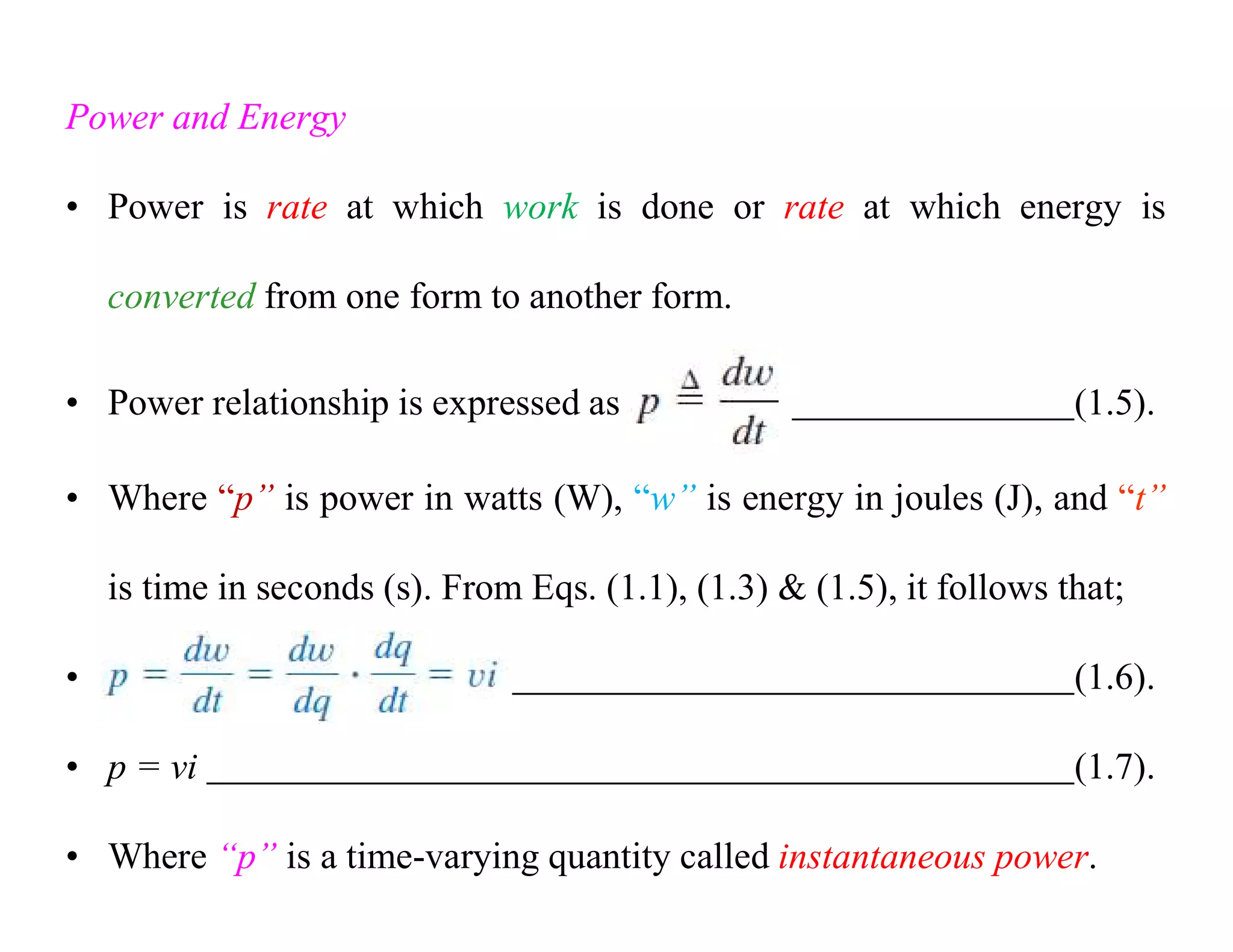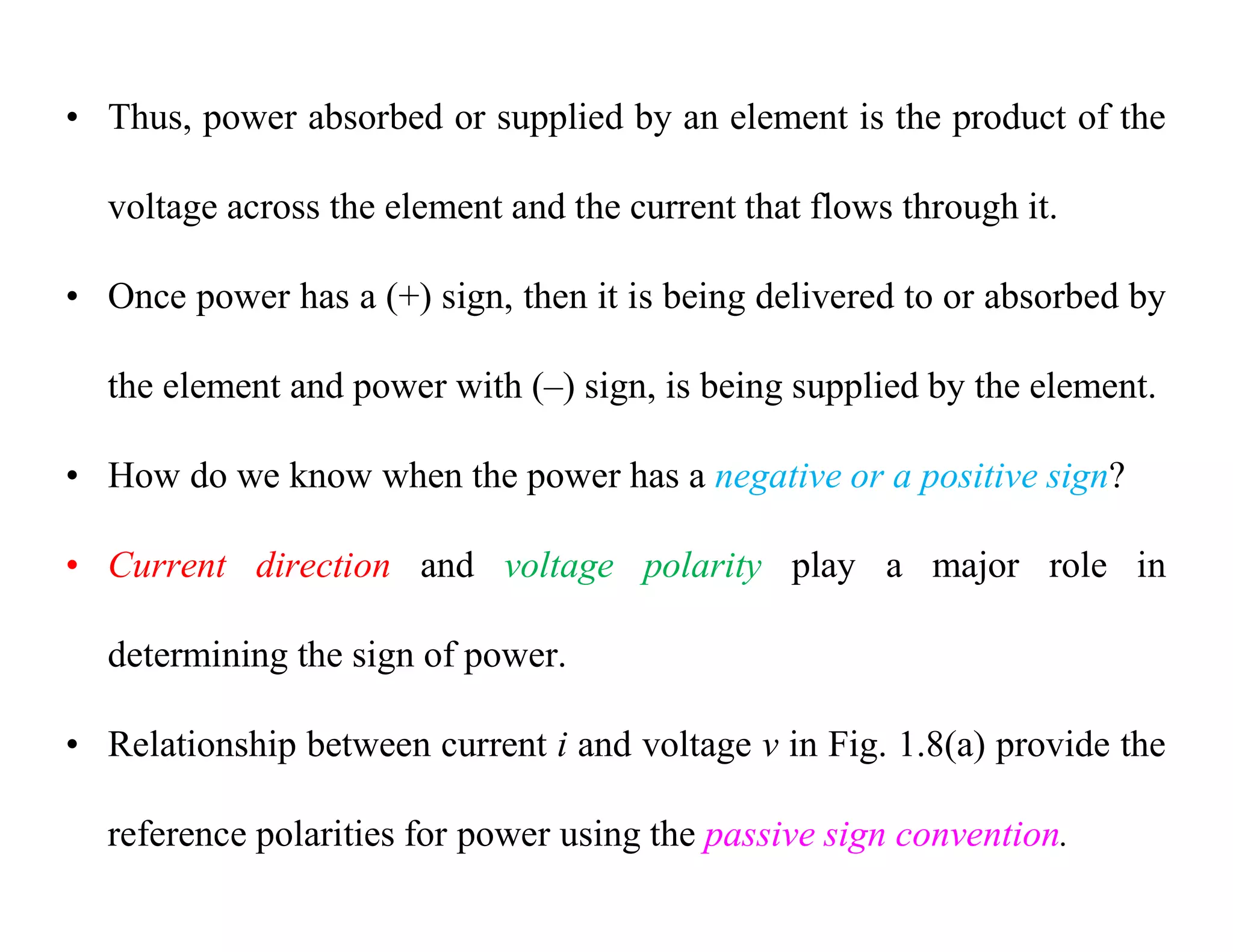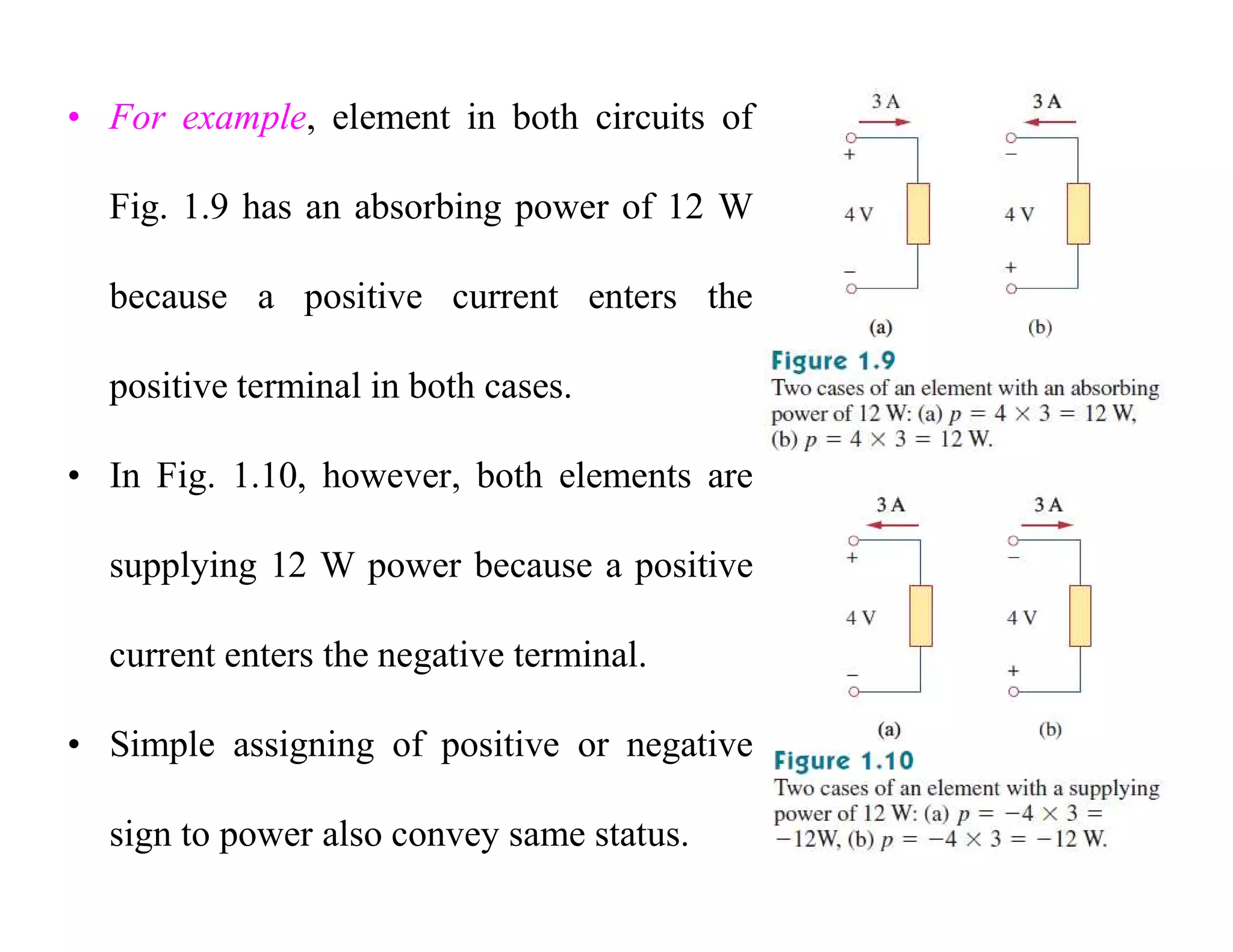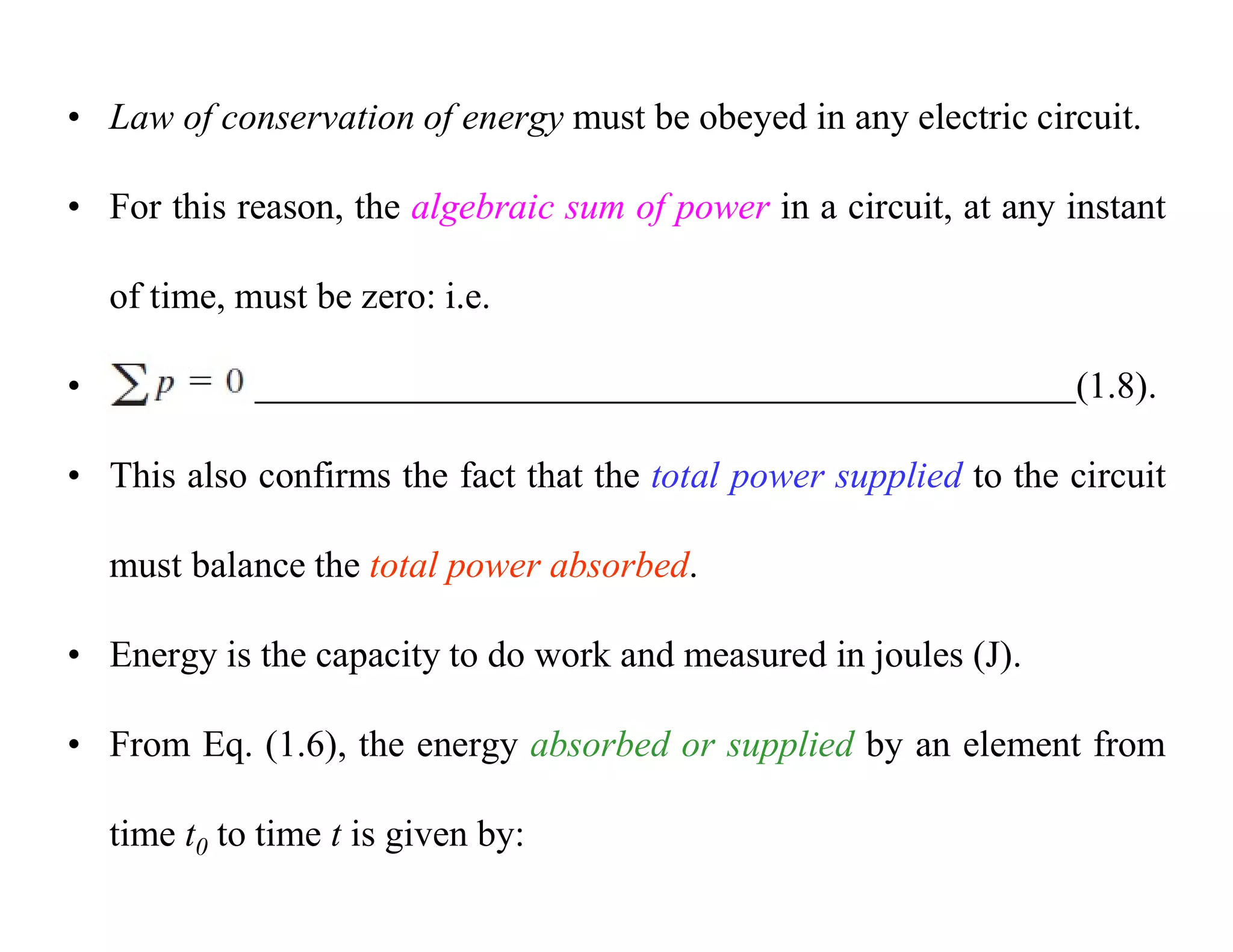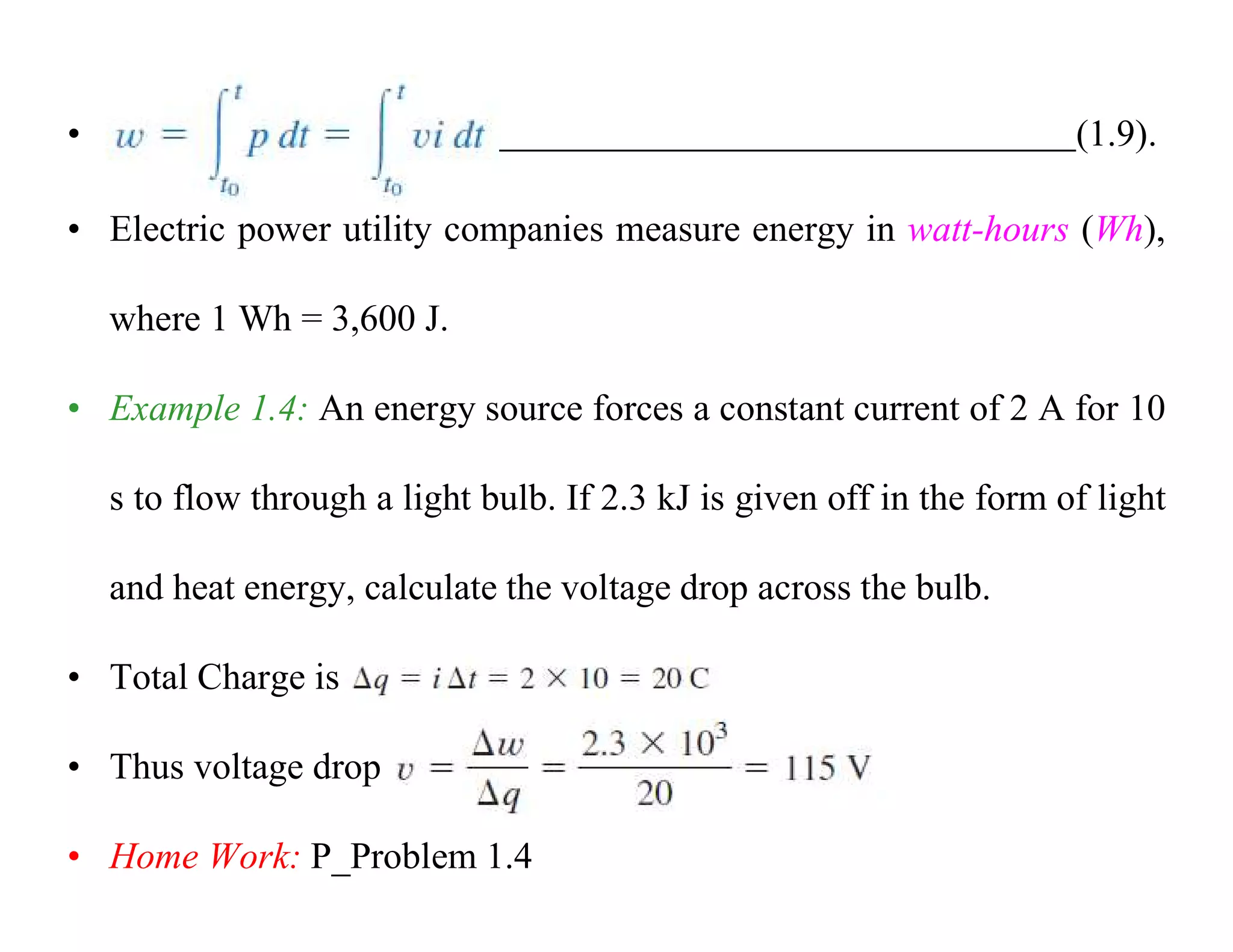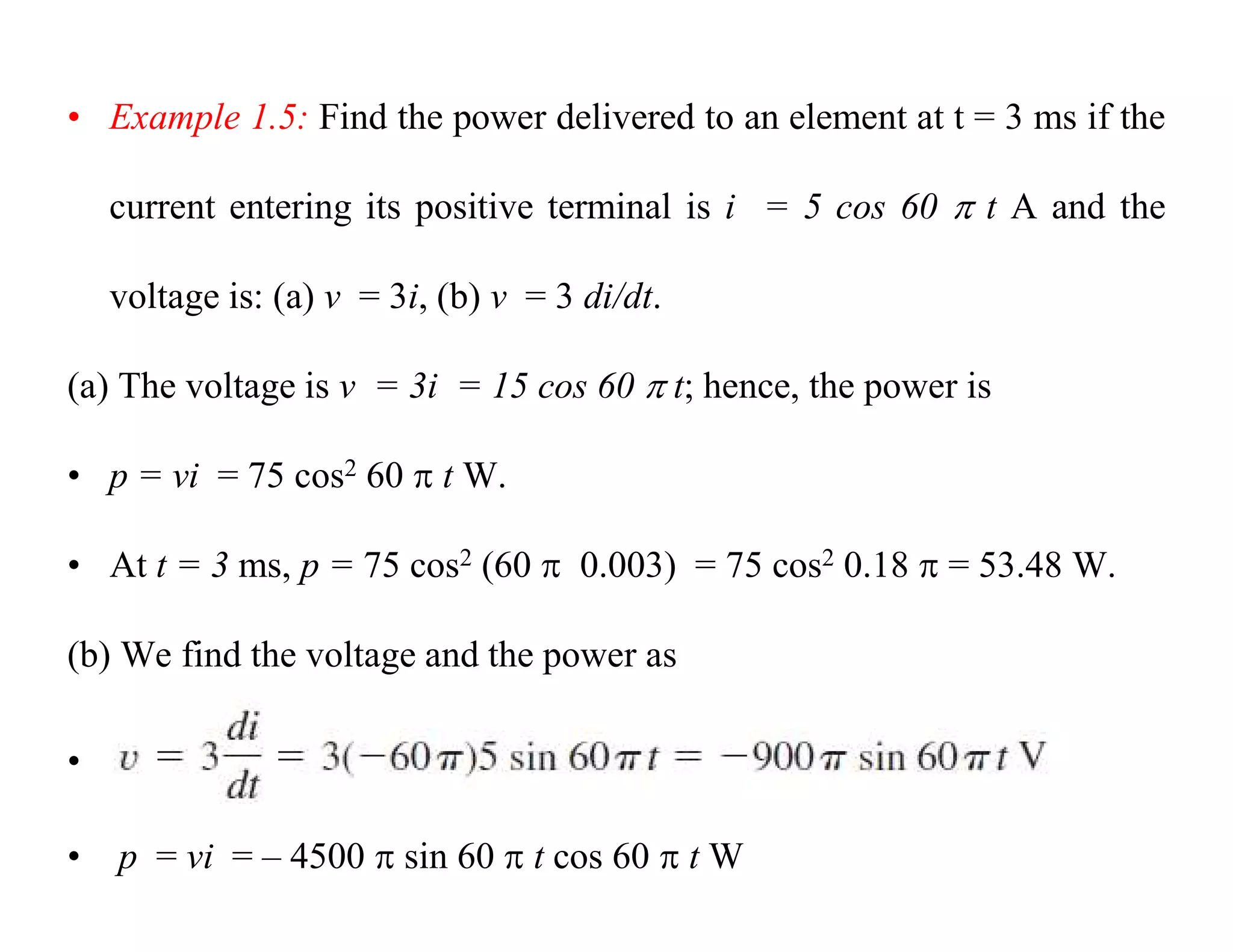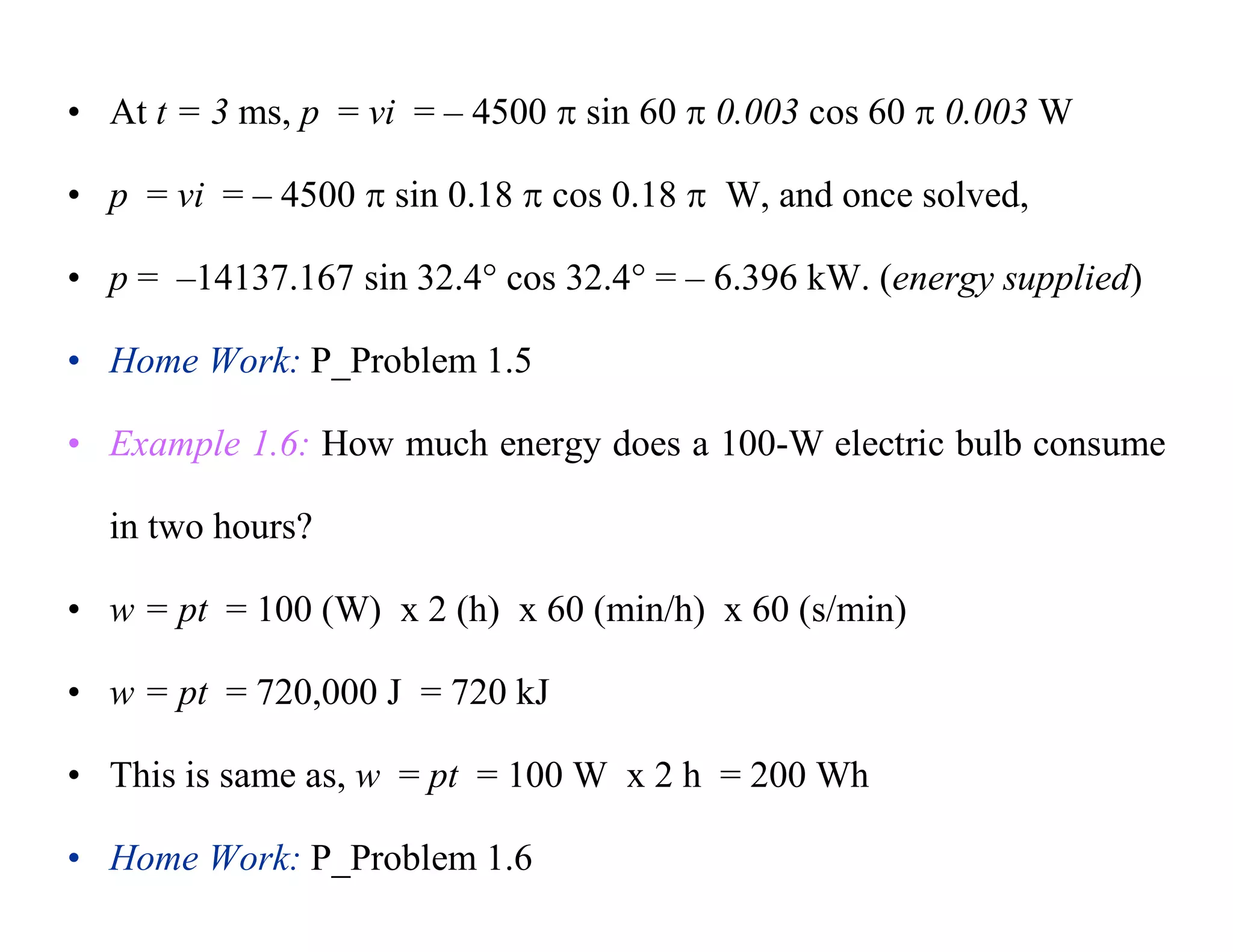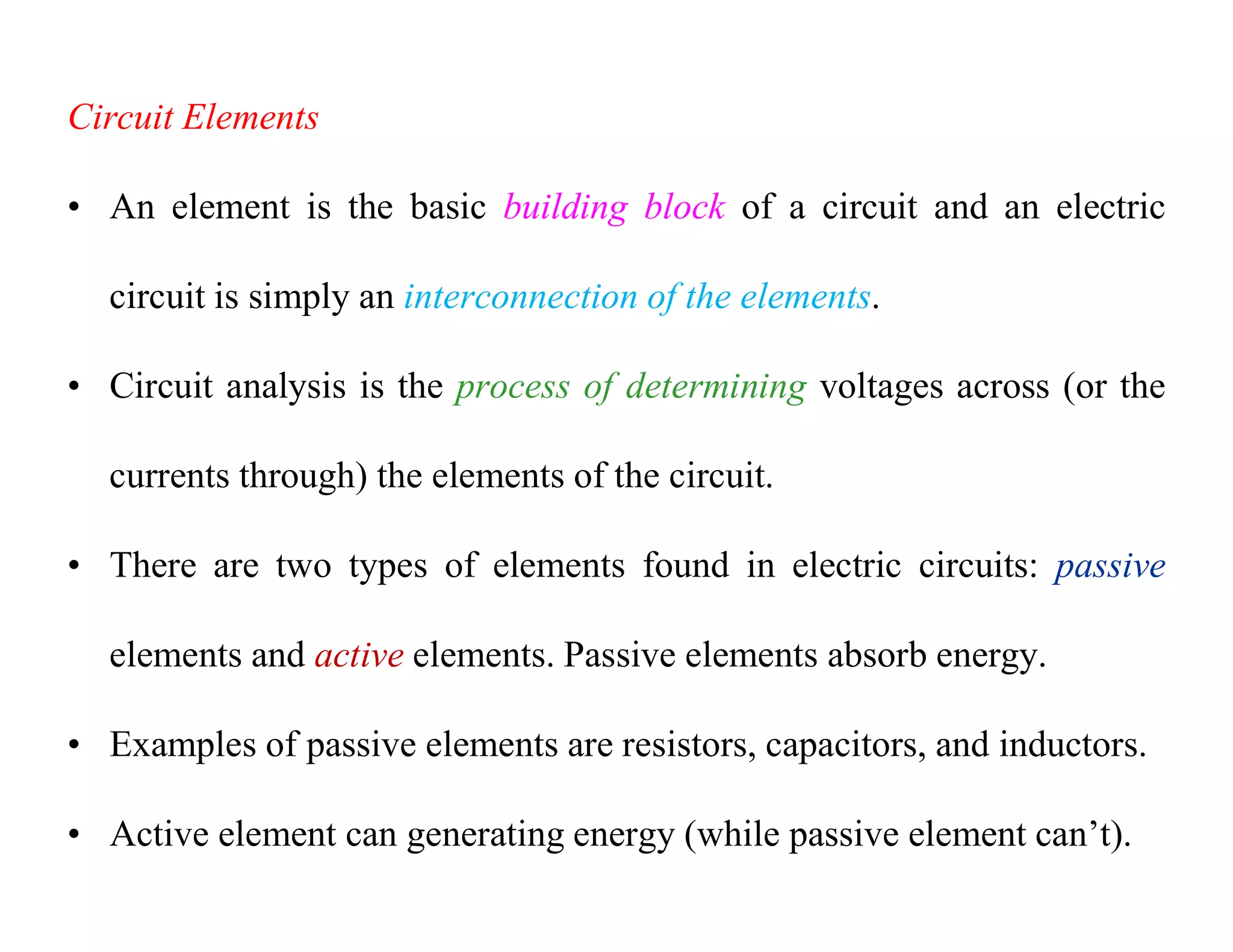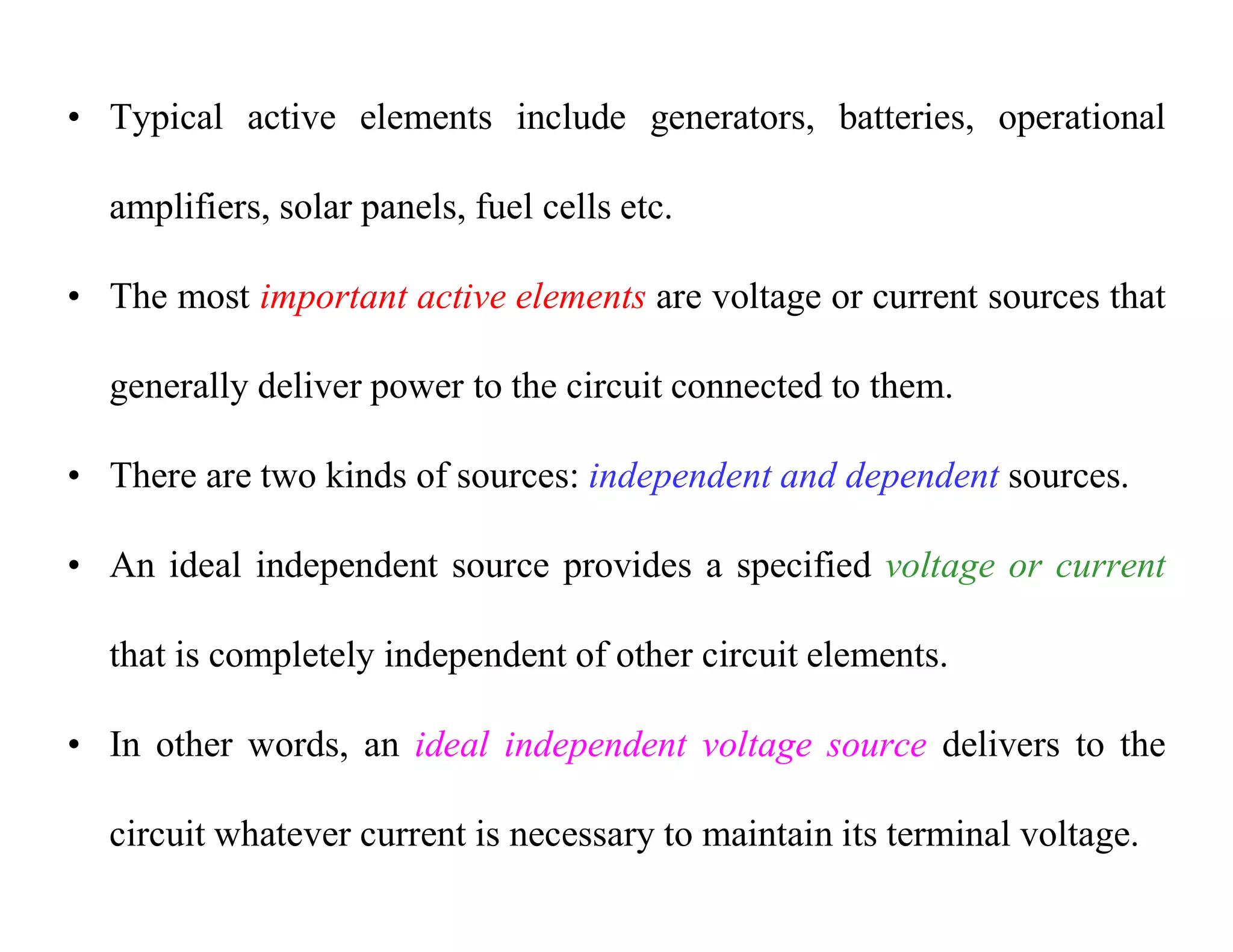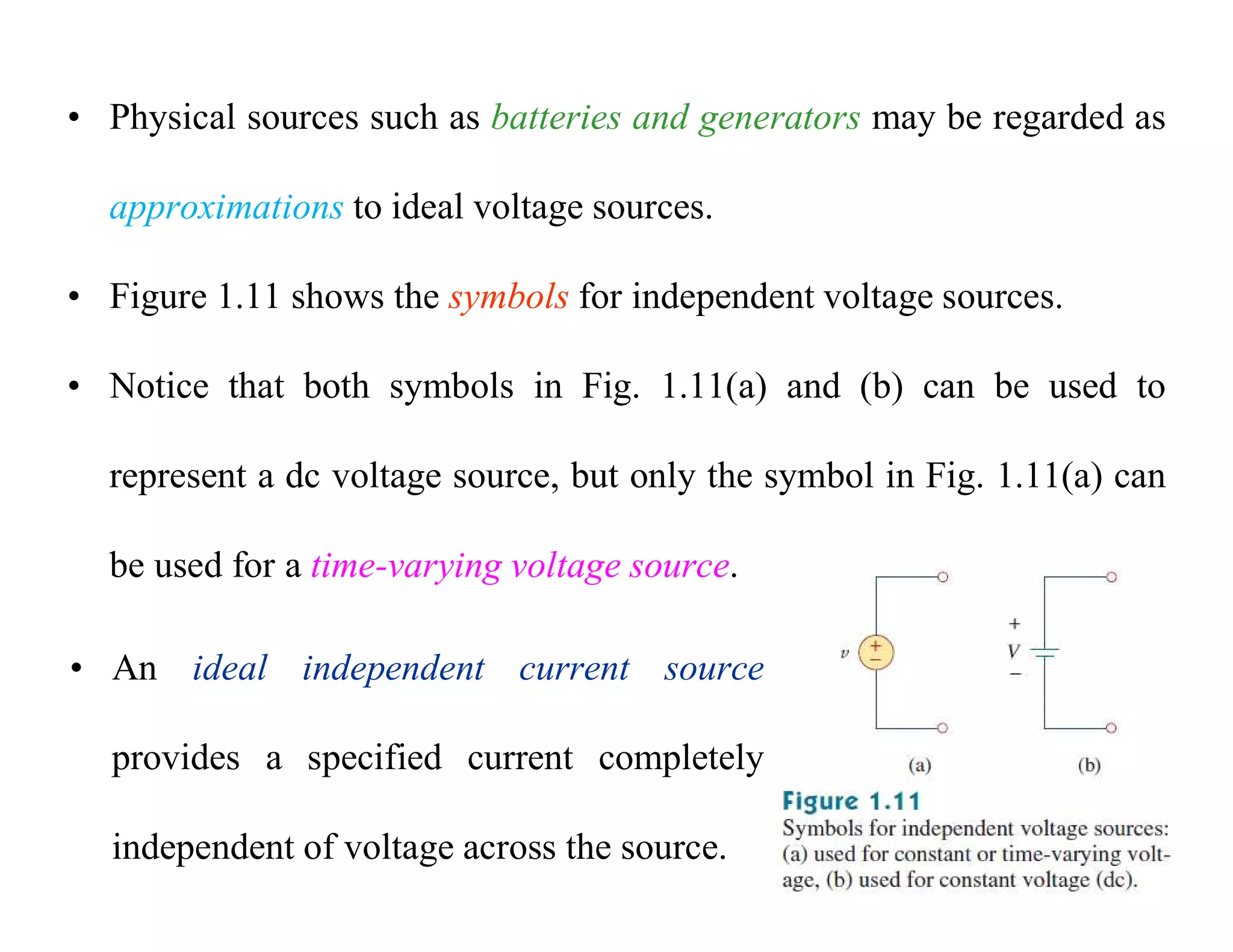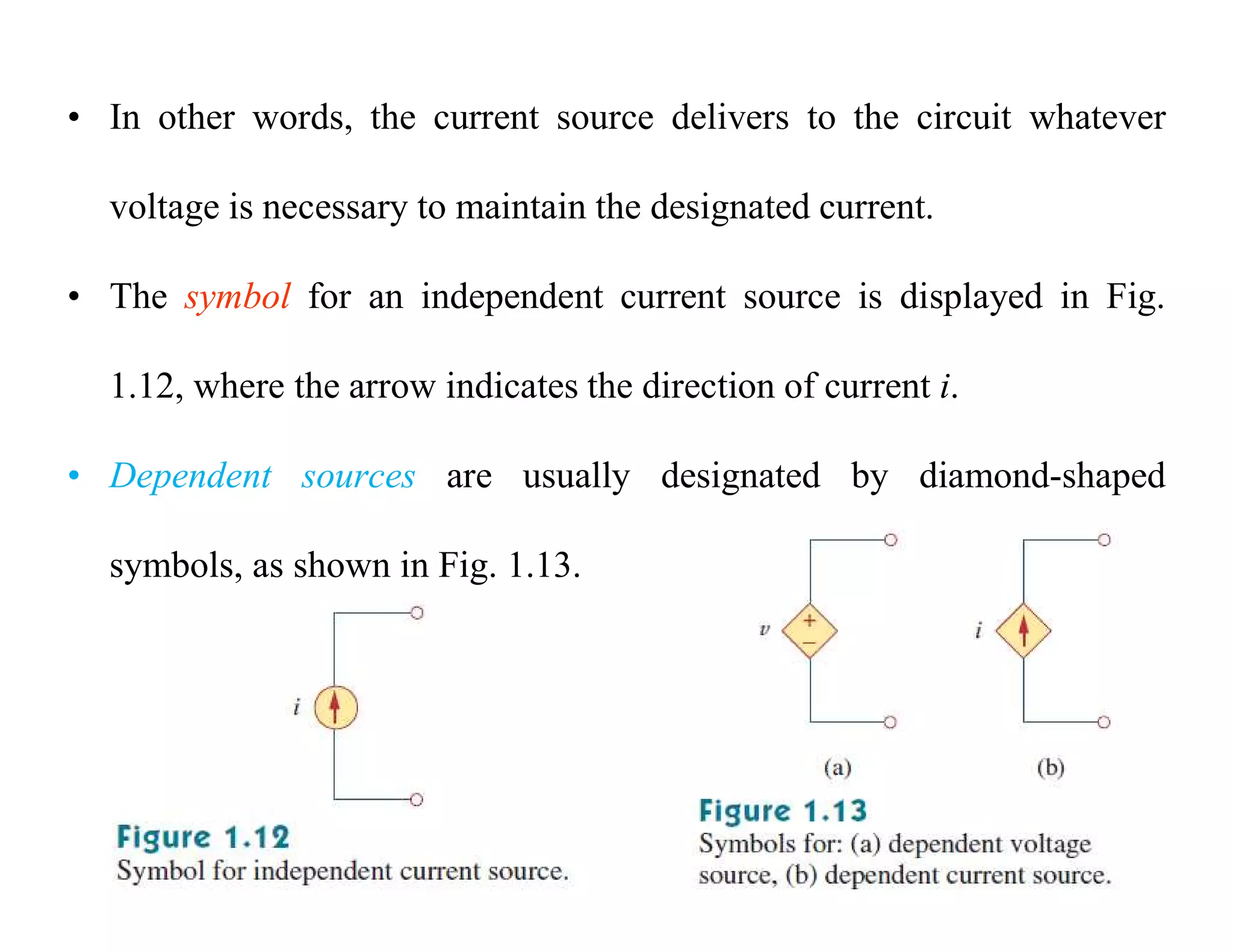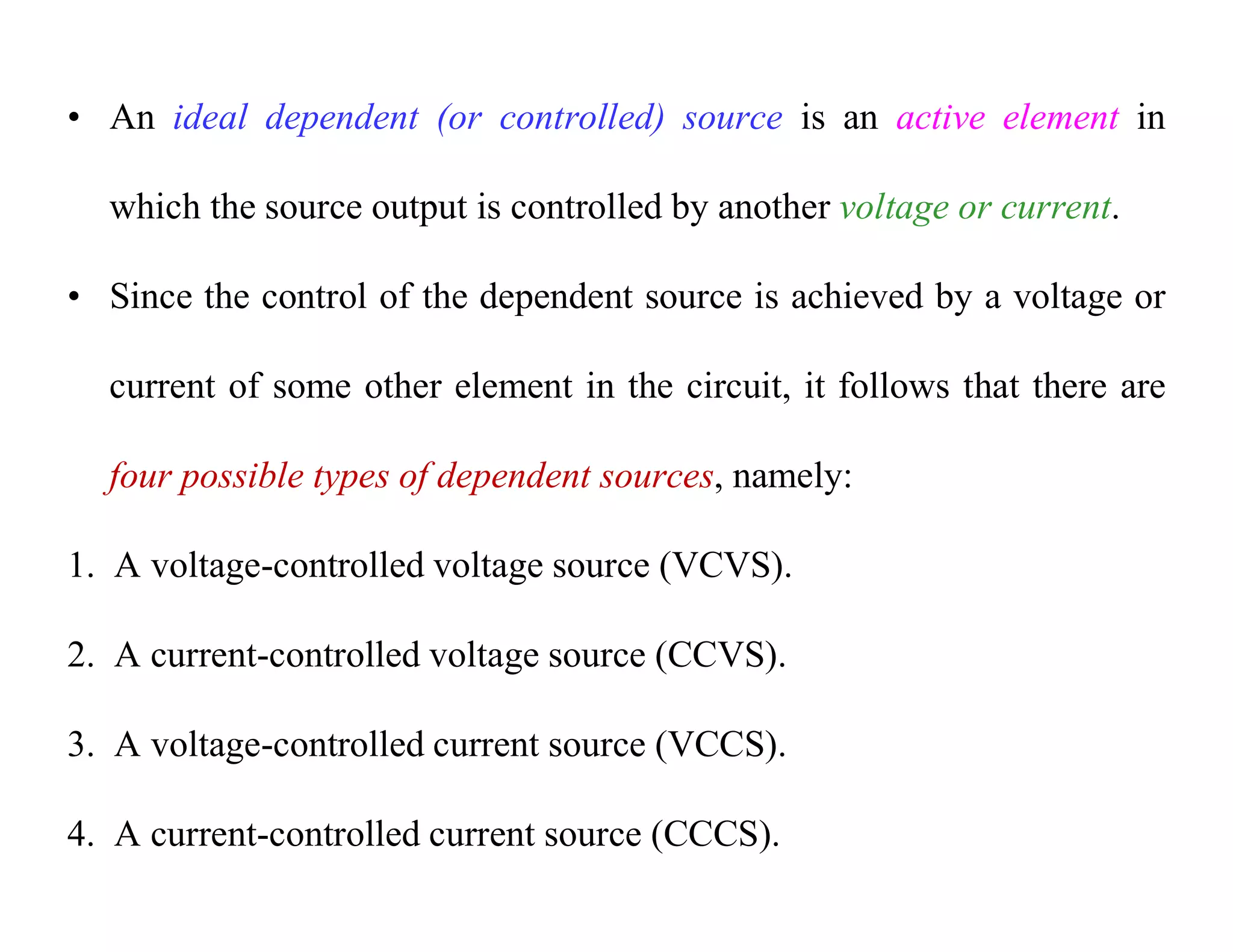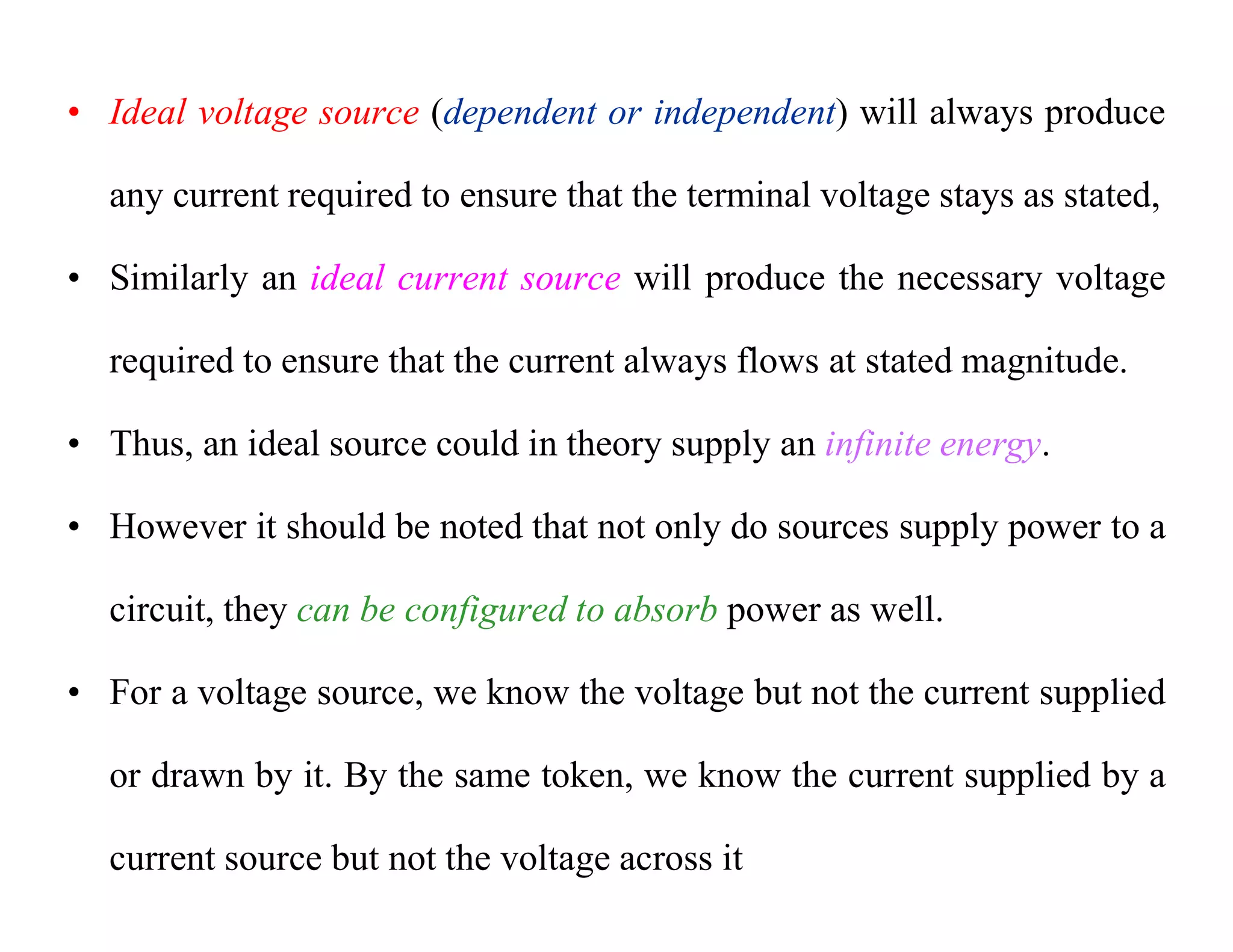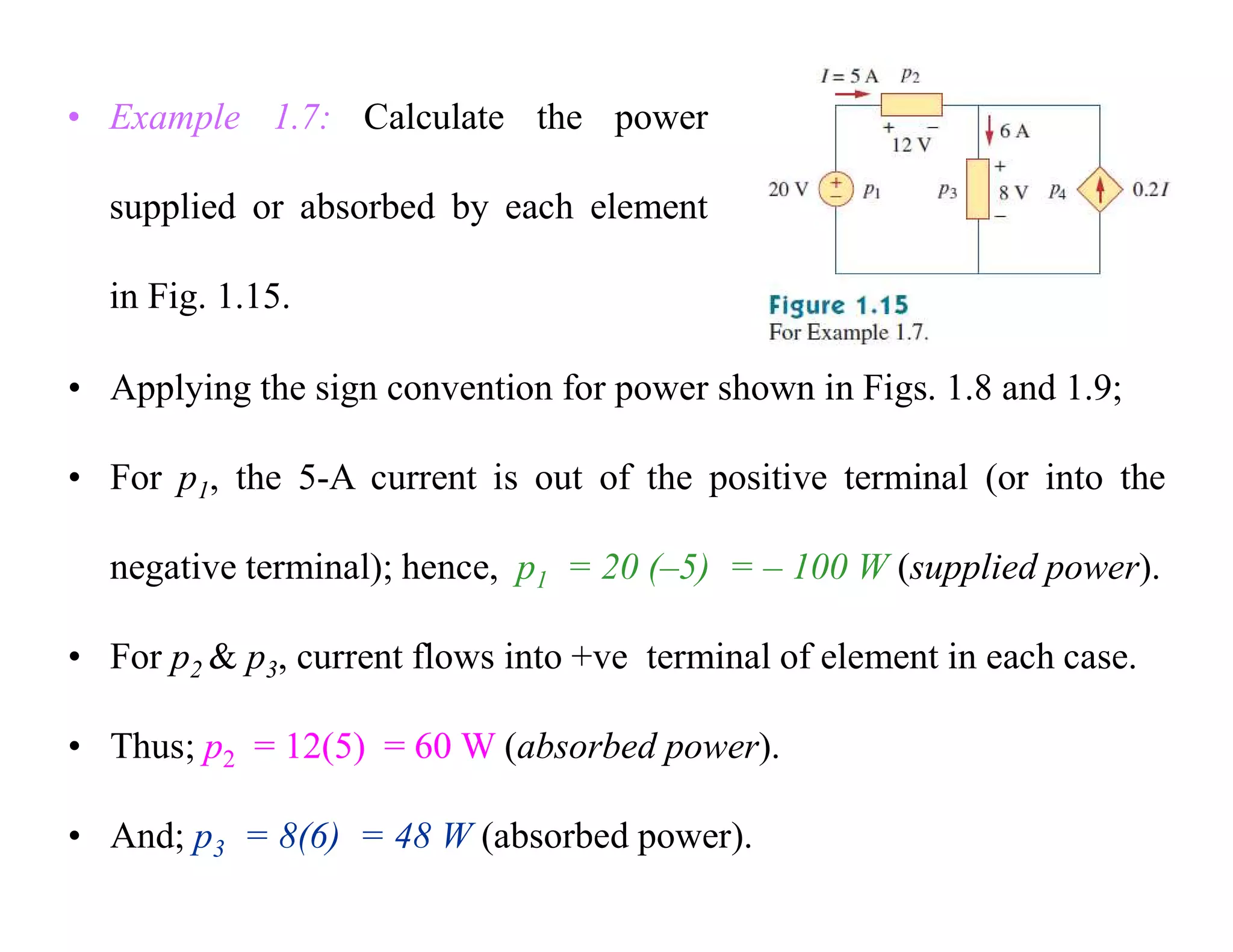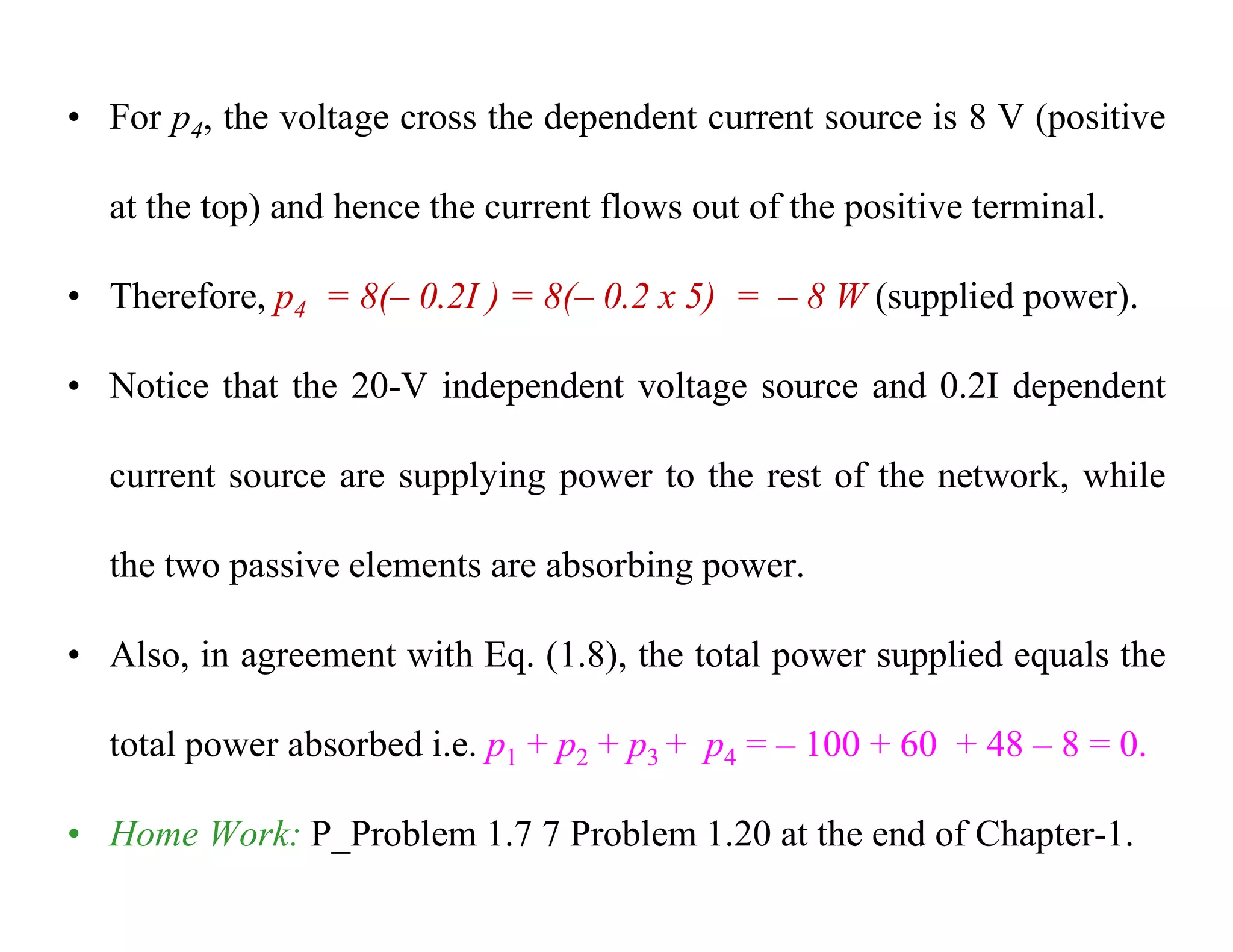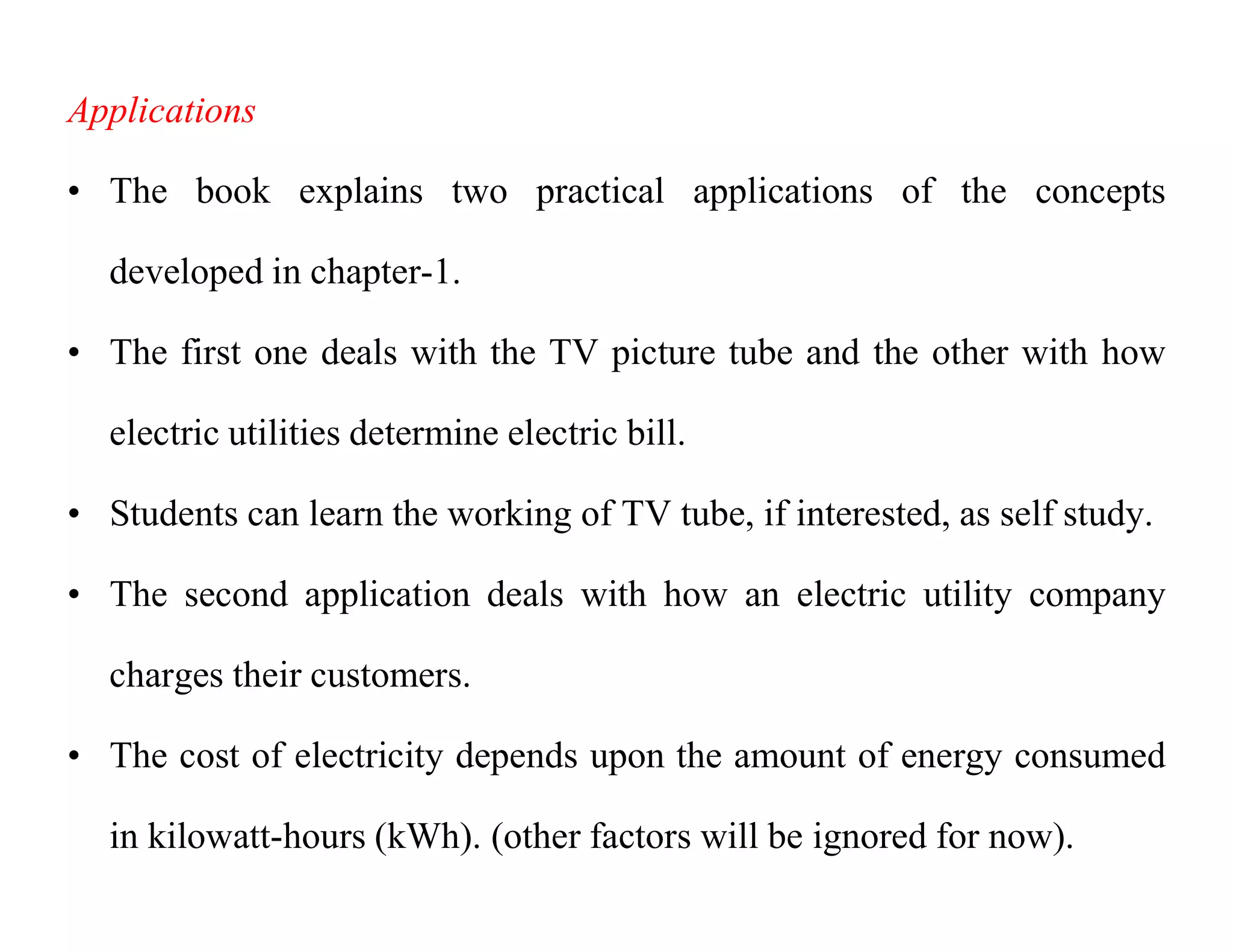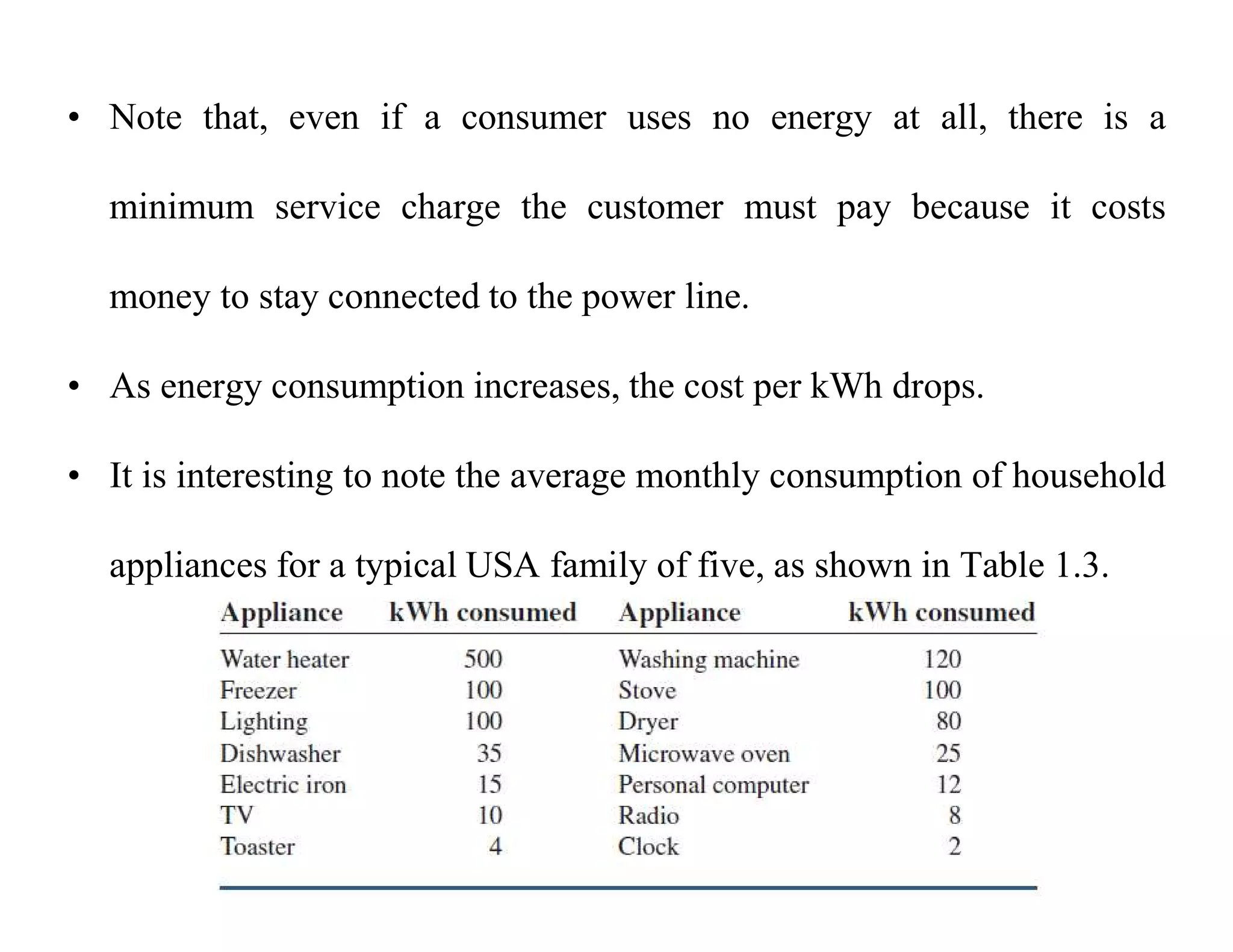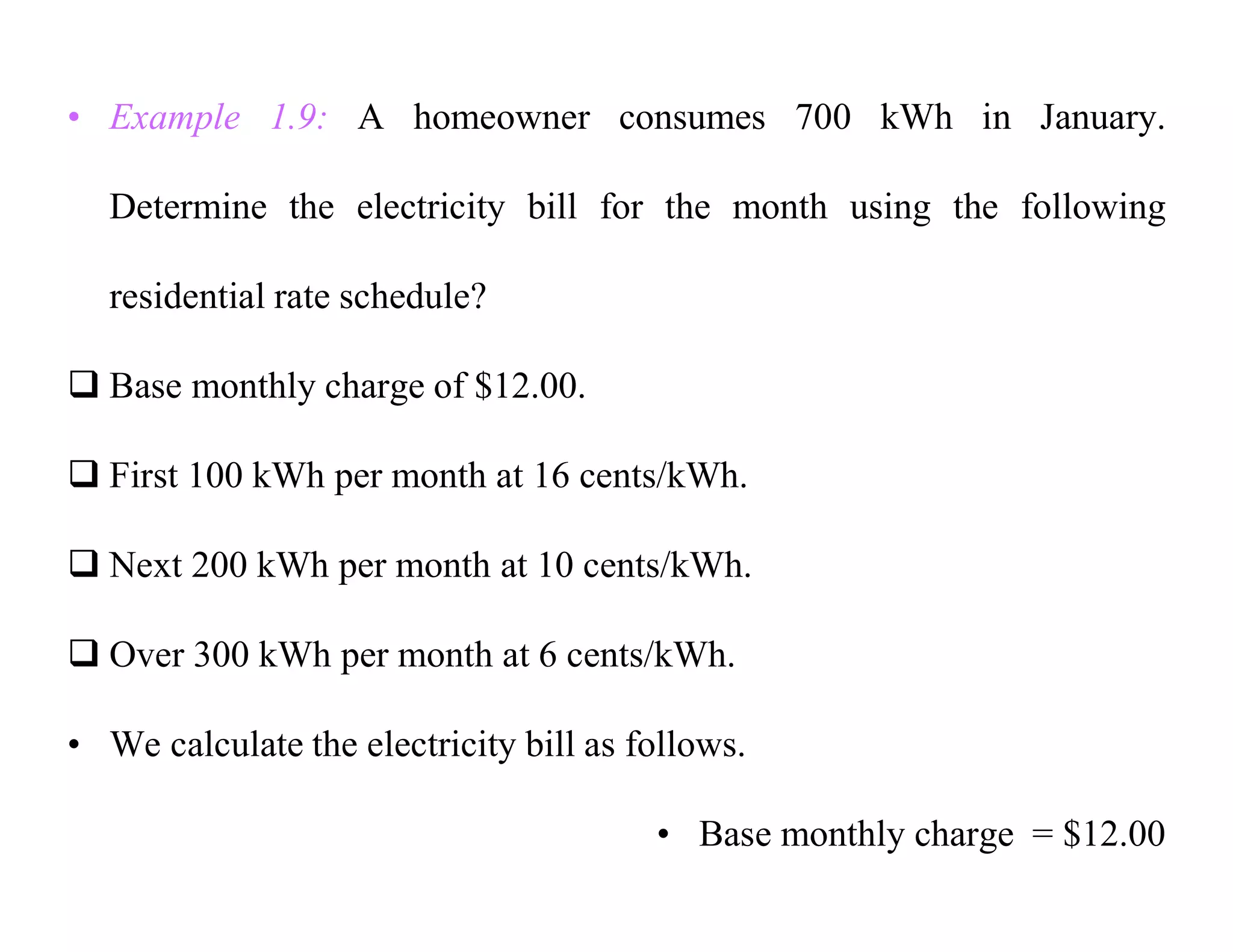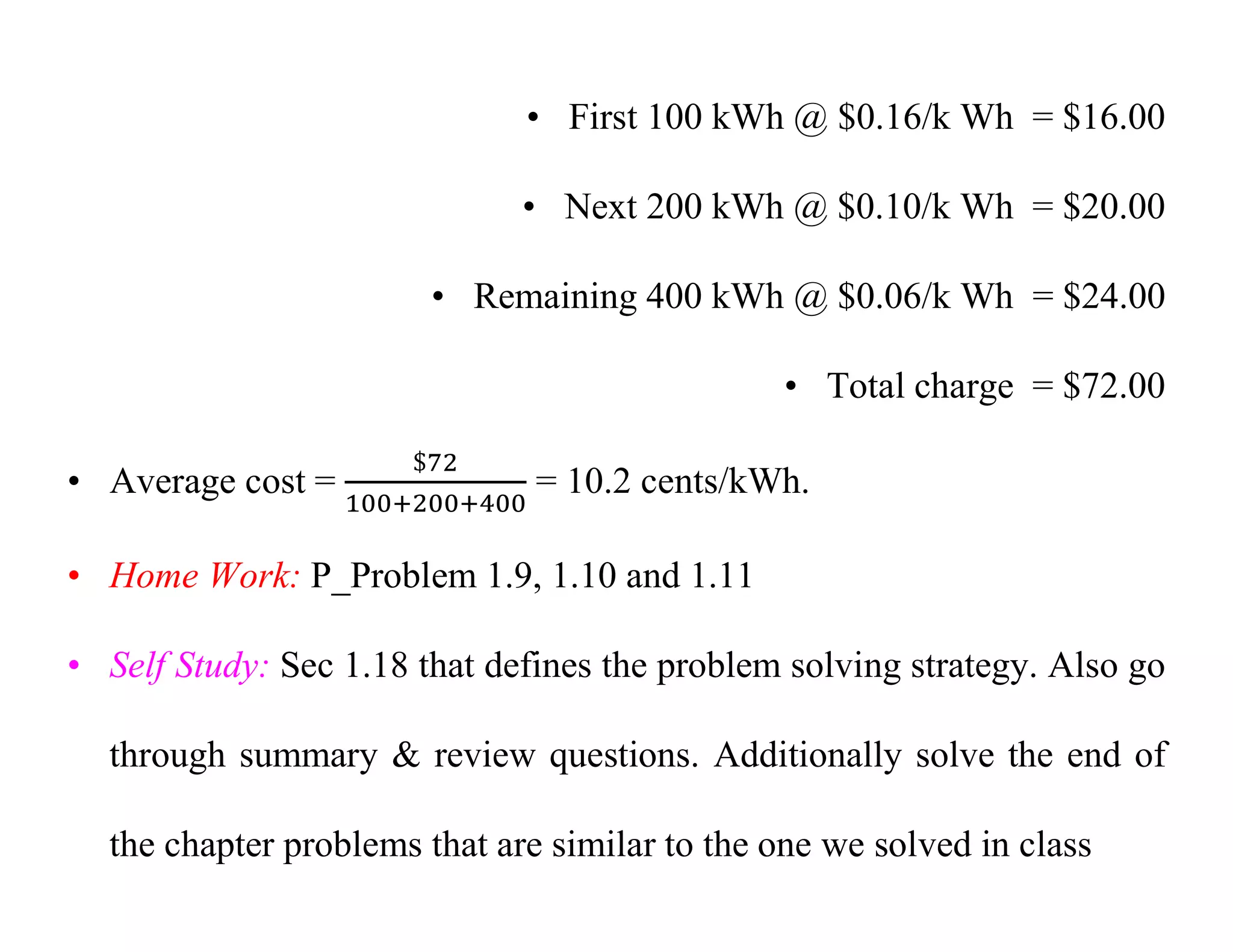This document provides an introduction to basic electrical concepts including charge, current, voltage, power, energy, and circuit elements. It defines the international system of units used in electrical engineering. Key concepts covered include defining the ampere as the unit of current representing the flow of electric charge, defining voltage as the work required to move a unit of charge from one point to another, and defining power as the rate at which energy is transferred. Circuit analysis techniques are introduced for studying the behavior of electric circuits.
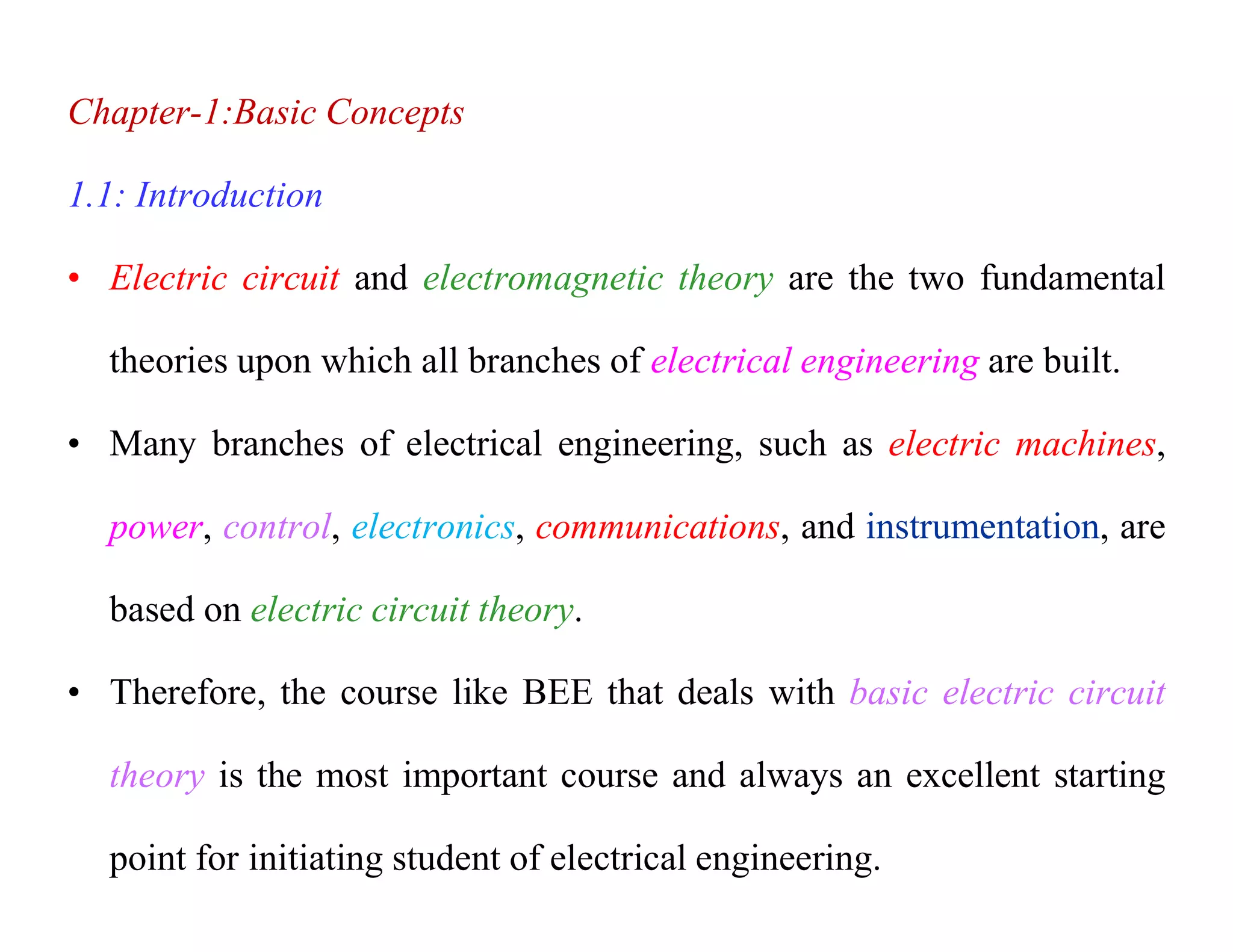
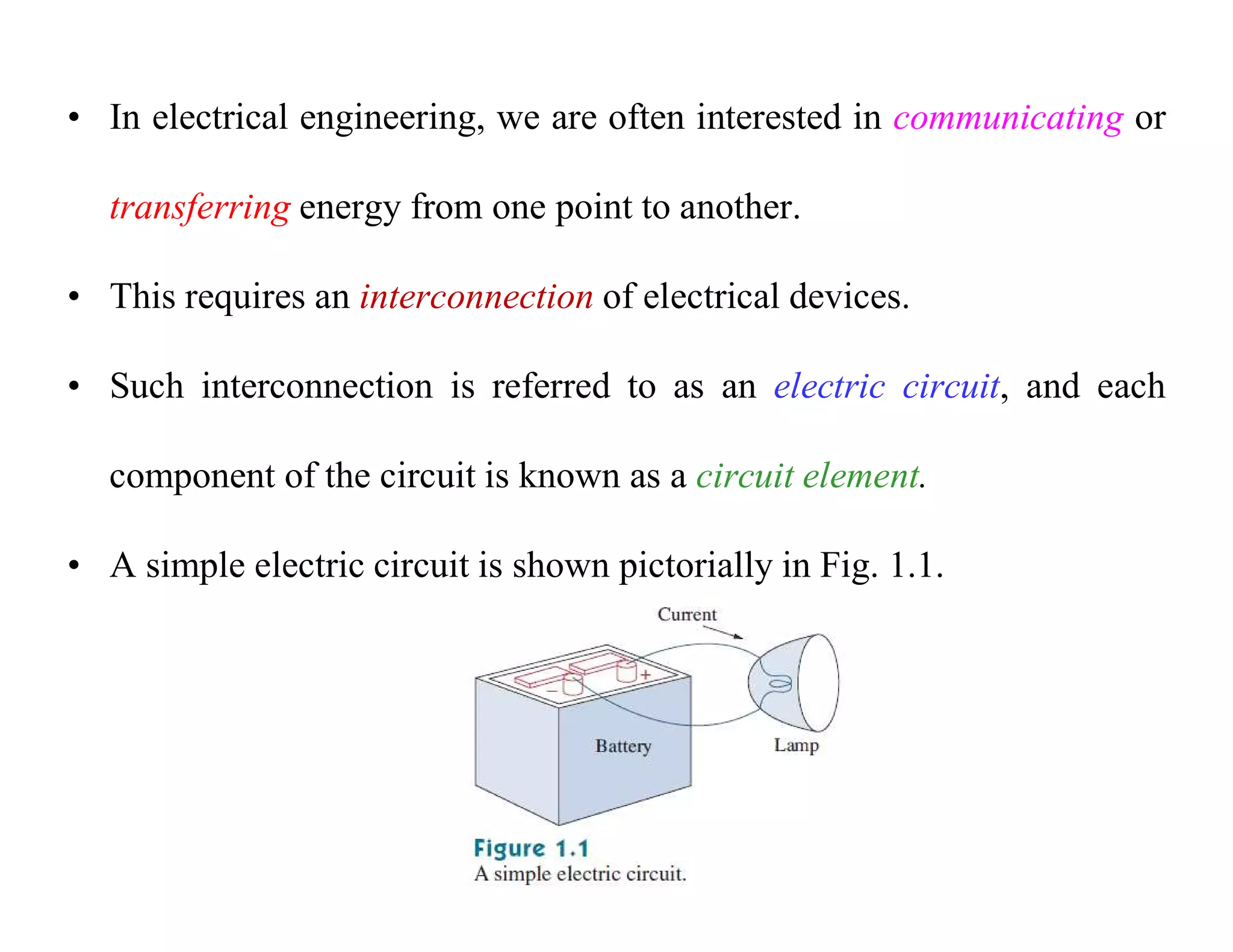

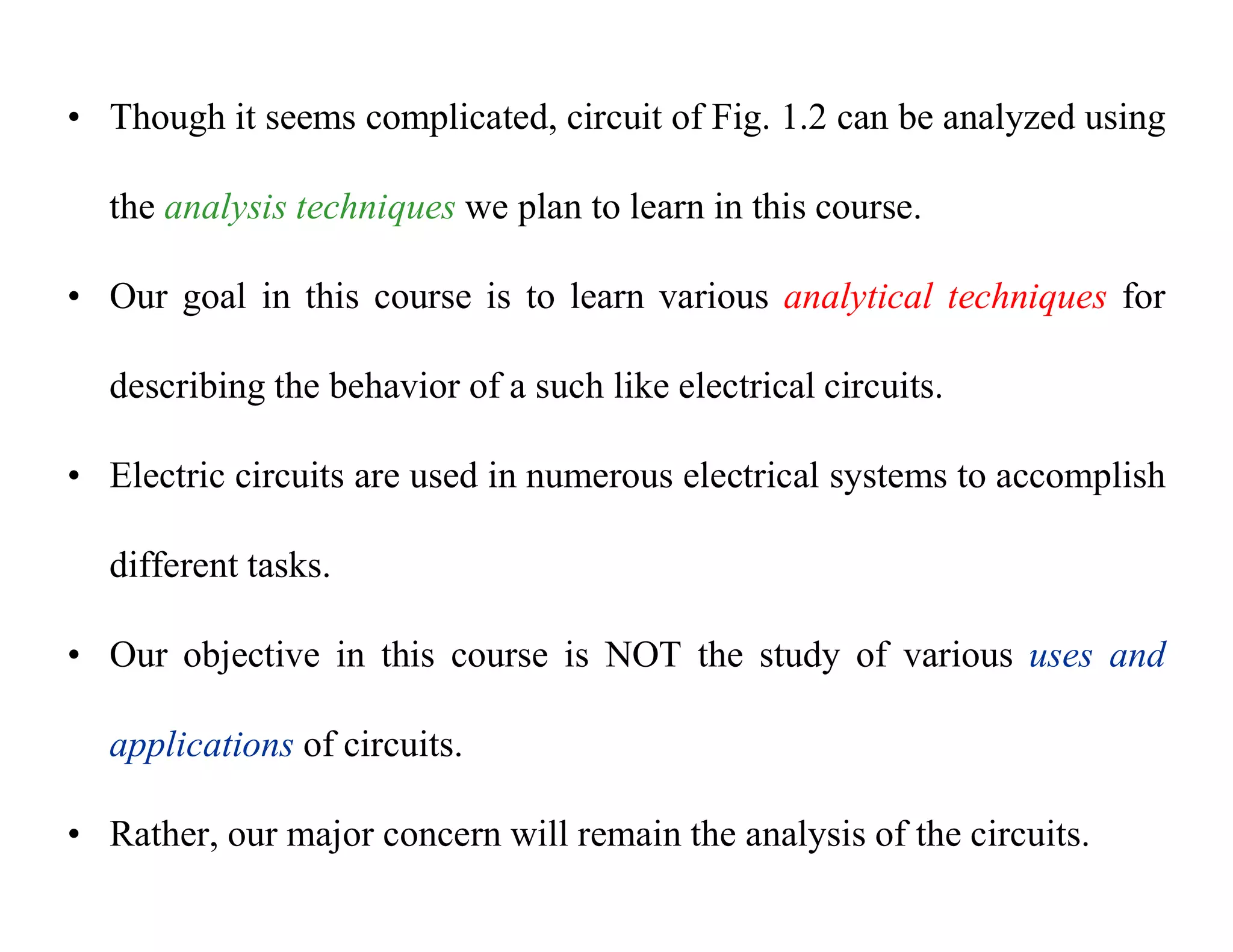
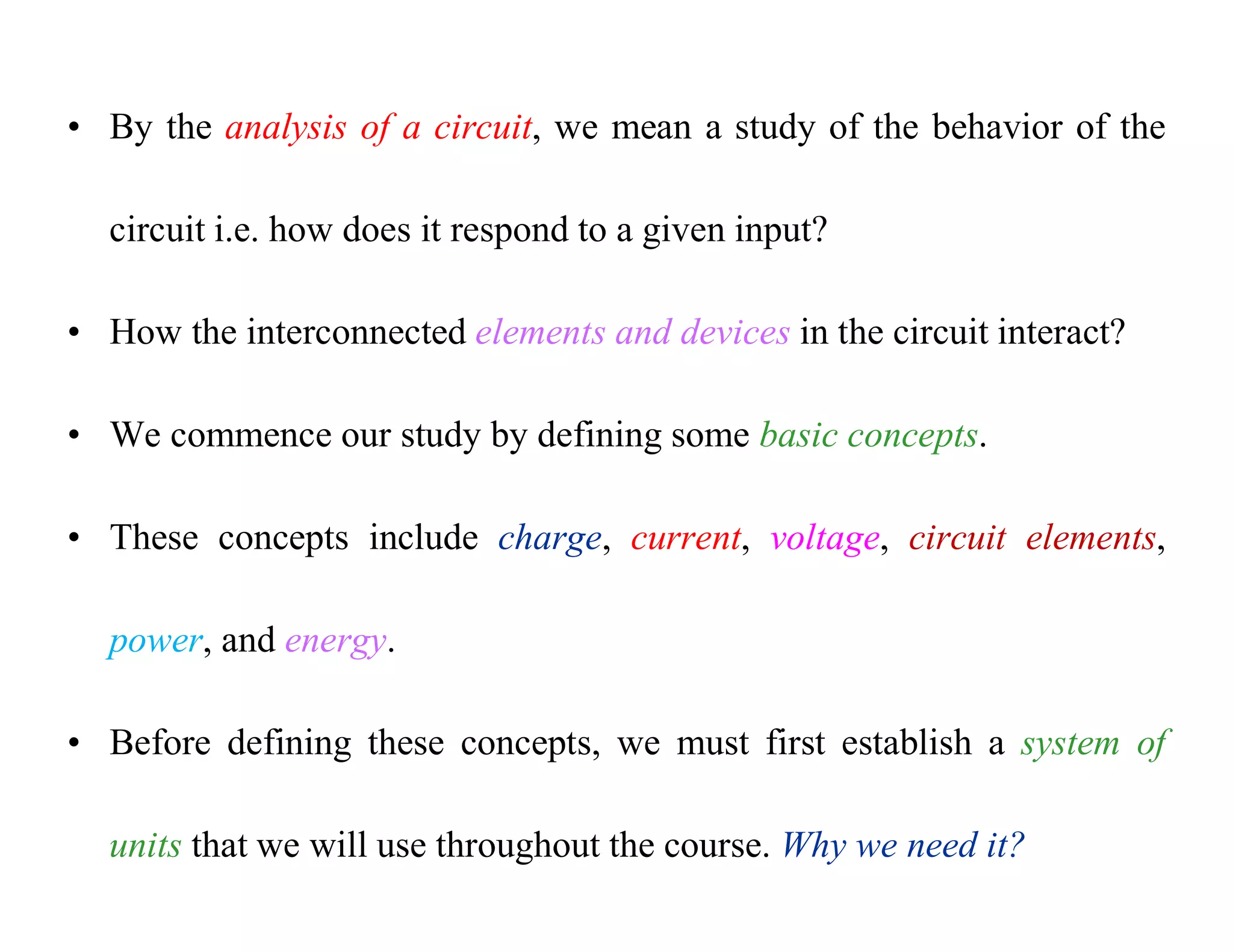
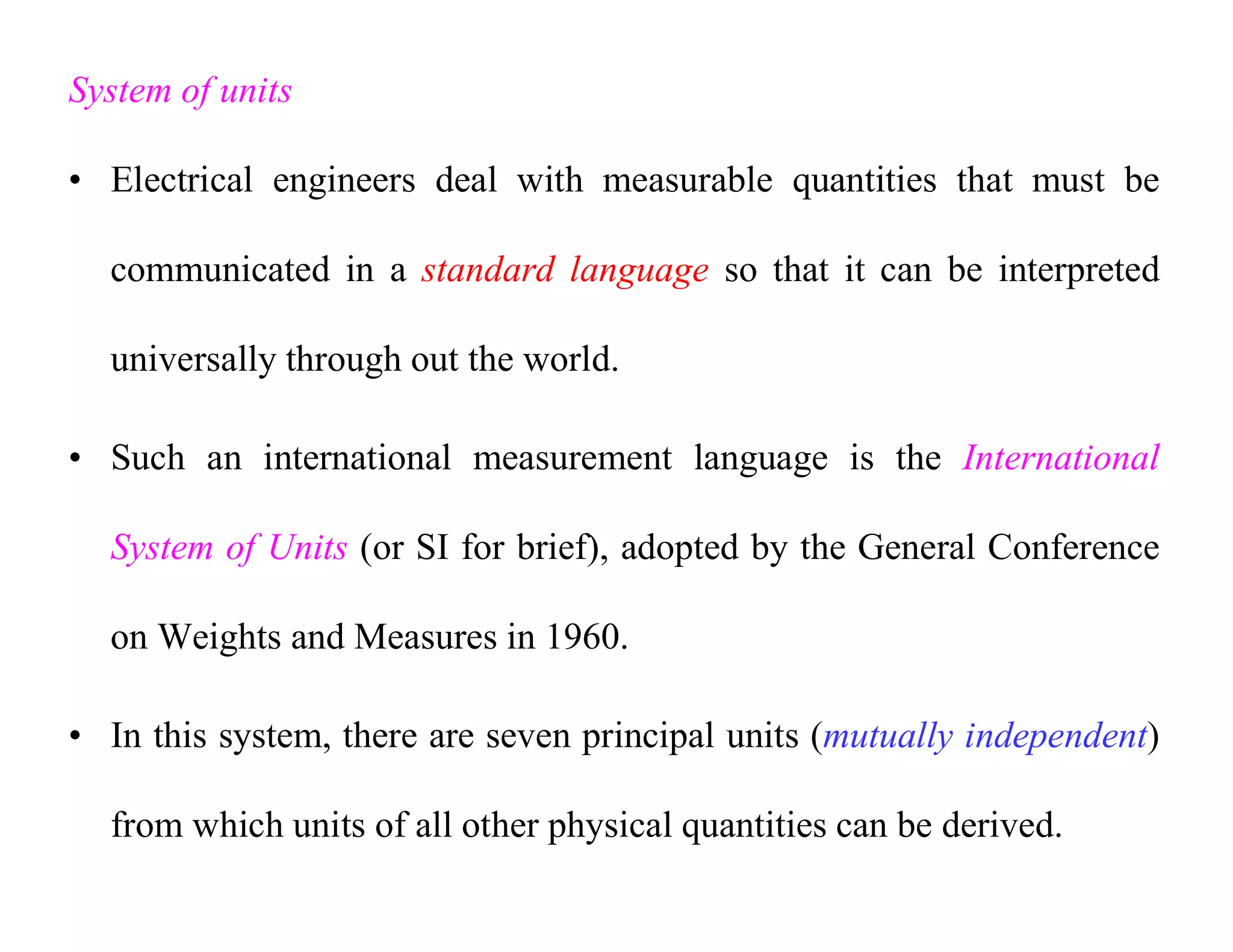
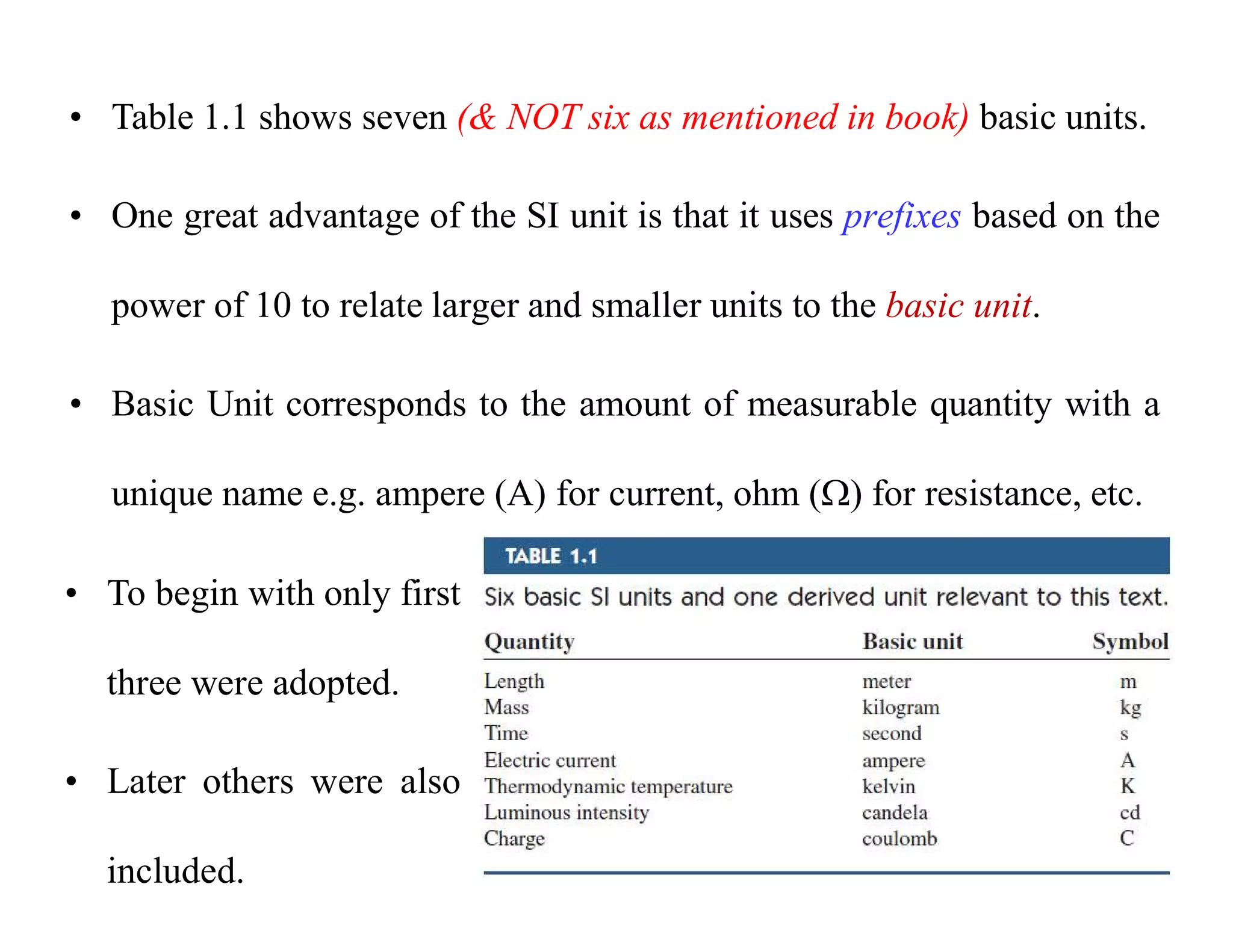
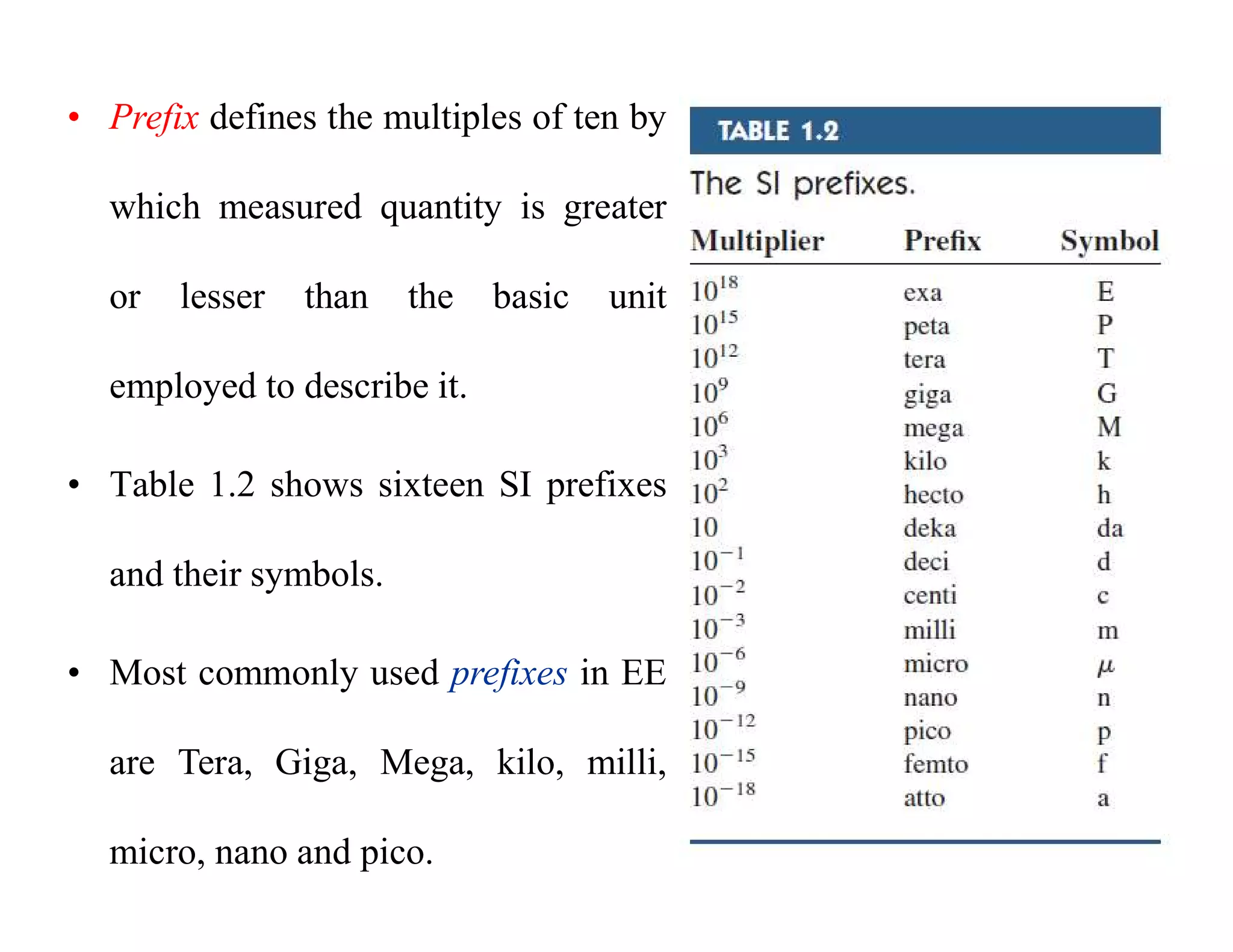
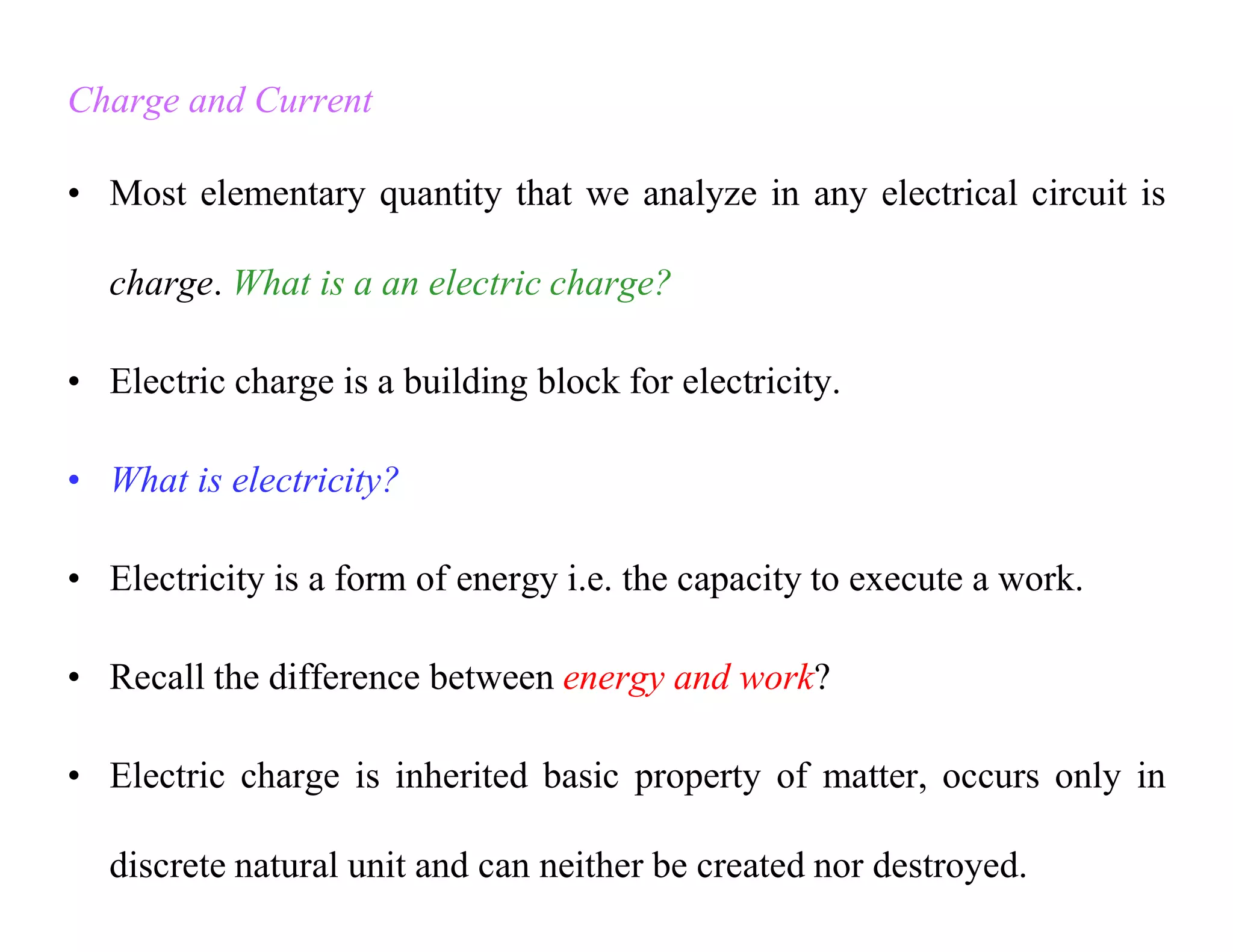
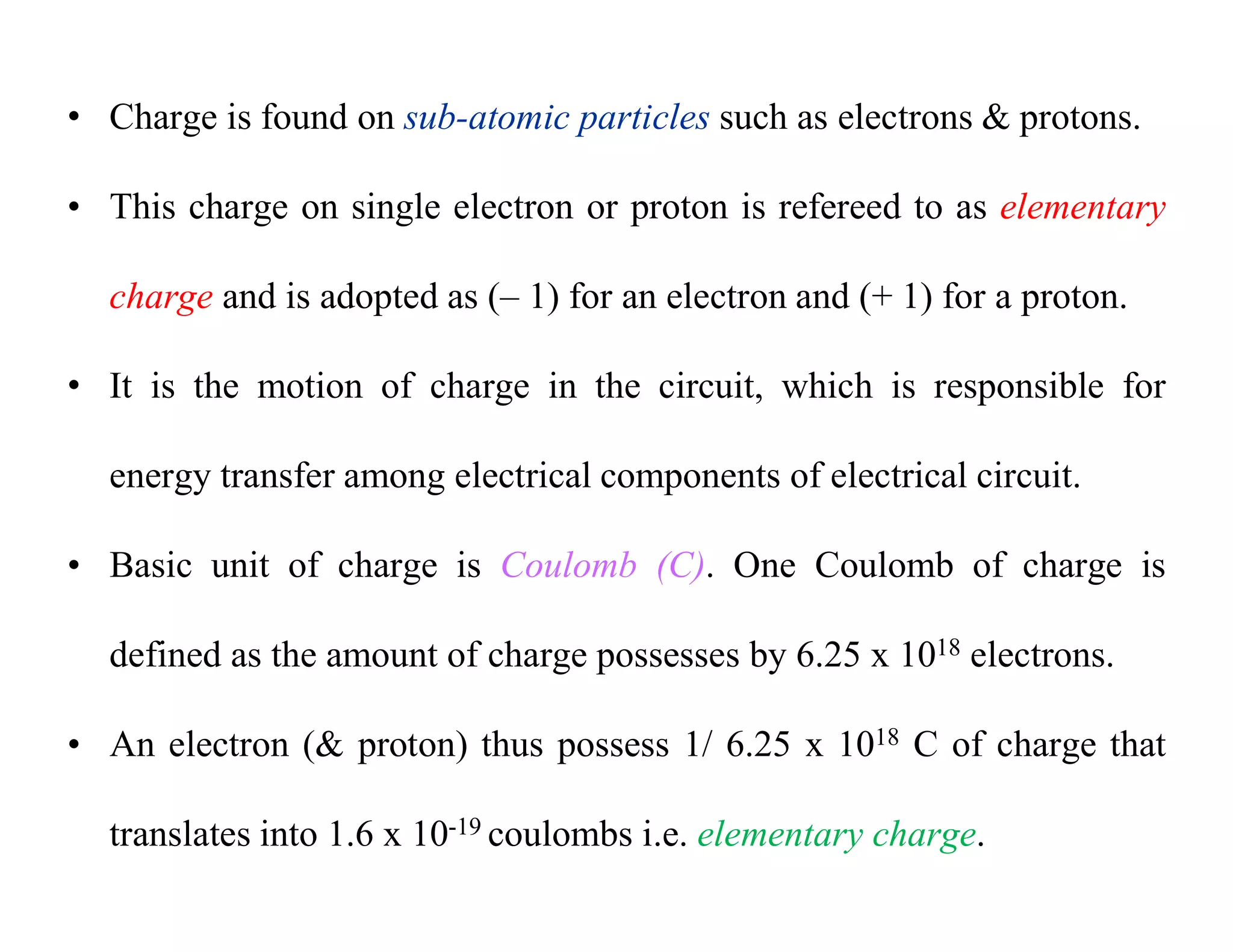
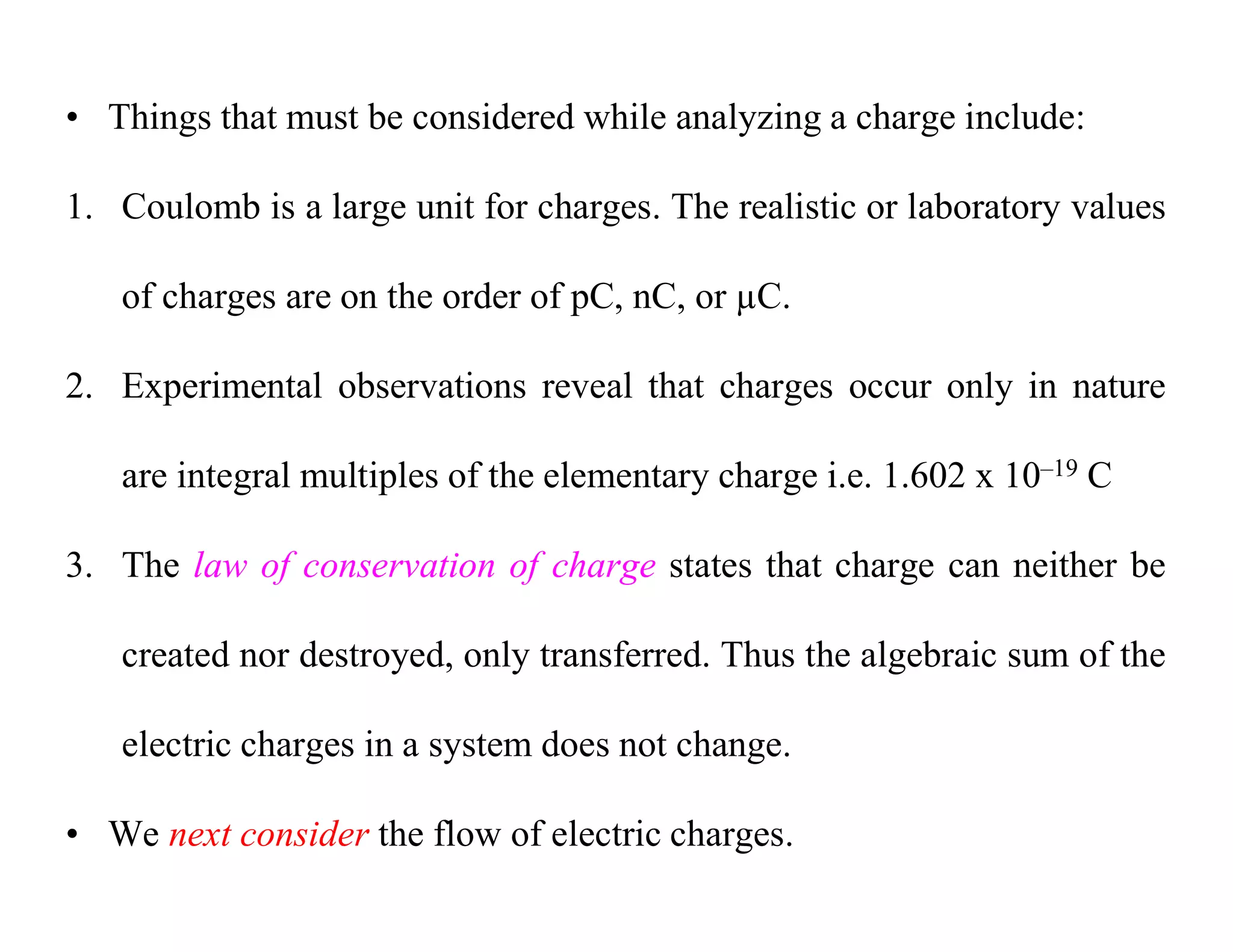
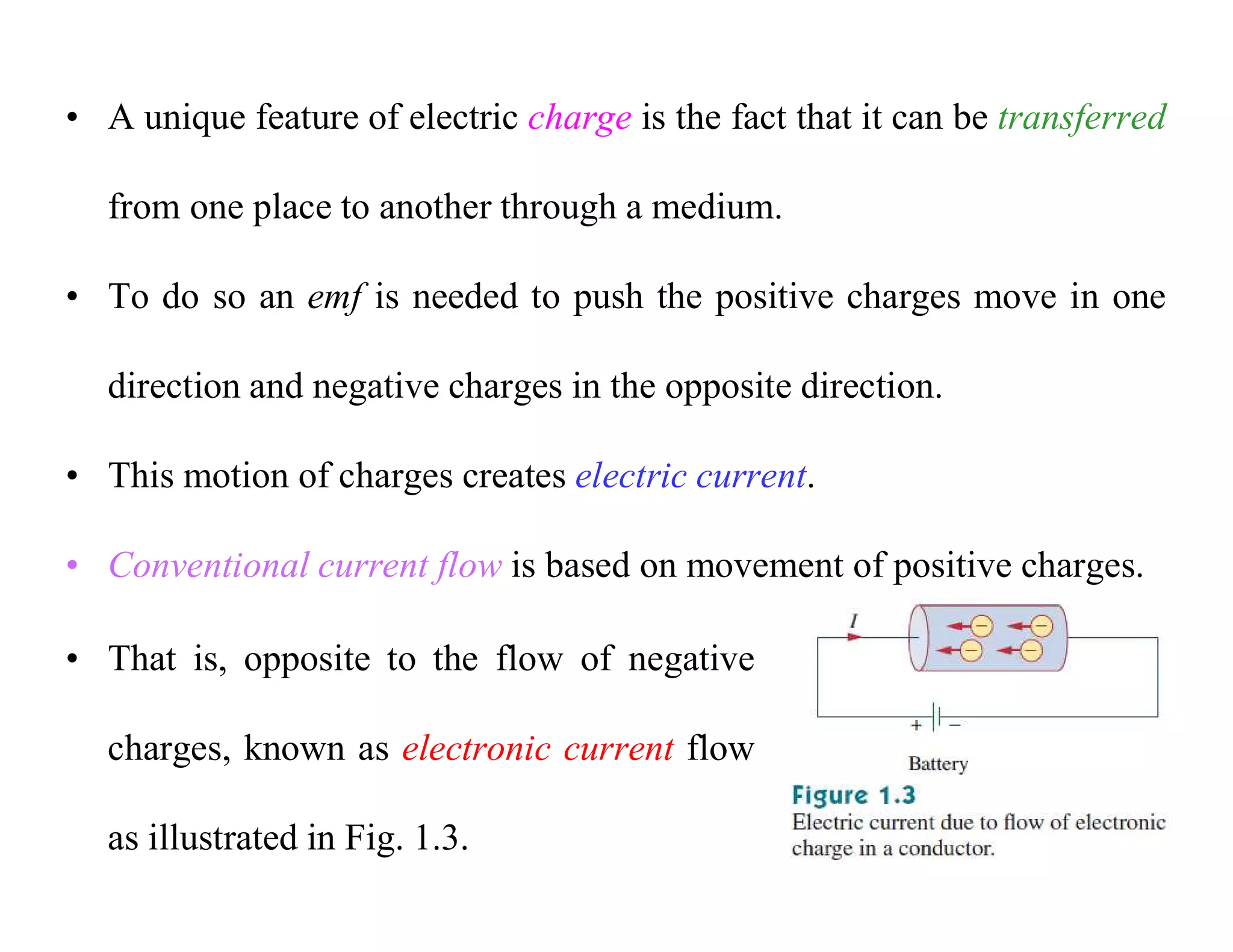


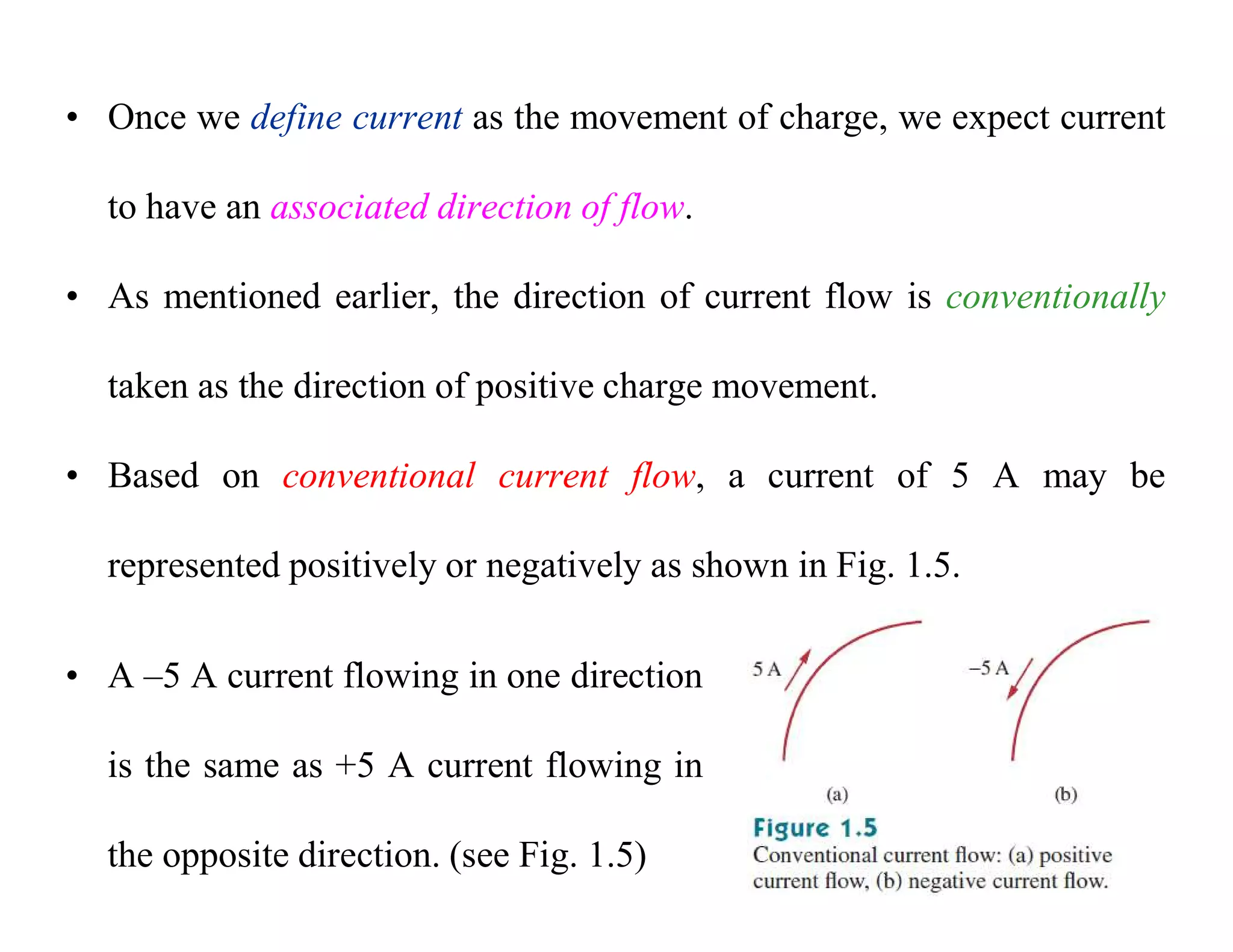
![• Example 1.1: How much charge is represented by 4,600 electrons?
• Each electron has –1.602 x 10–19 C charge on it, thus charge on 4600
electrons will be q = 4600 x –1.602 x 10–19 C = –7.369 x 10–16 C.
• Class Work: P_Problem 1.1; Calculate amount of charge represented
by six million protons. (6 x 106)(1.602 x 10–19 C) = 9.612 x 10–13 C.
Example 1.2: For q = 5t sin 4t mC charge entering a terminal
calculate the current at t = 0.5?
• For i = = (5t sin 4 mC/s, applying chain rule differentiation
• i = [5 sin 4 t + (5t cos 4 t)(4 ] mA.](https://image.slidesharecdn.com/basicconceptslinearcircuitanalysis-190625064537/75/Basic-concepts-linear-circuit-analysis-16-2048.jpg)
![• i = [5 sin 4 t + 20 t cos 4 t] mA.
• And at t = 0.5;
• Home Work: P_Problem 1.2.
• Example 1.3: Determine the charge entering a terminal between t = 1s
to t = 2s if the current passing the terminal is i = (3t2 – t) A?
• and once solved,
• Q
• Home Work: P_Problem 1.3.](https://image.slidesharecdn.com/basicconceptslinearcircuitanalysis-190625064537/75/Basic-concepts-linear-circuit-analysis-17-2048.jpg)

